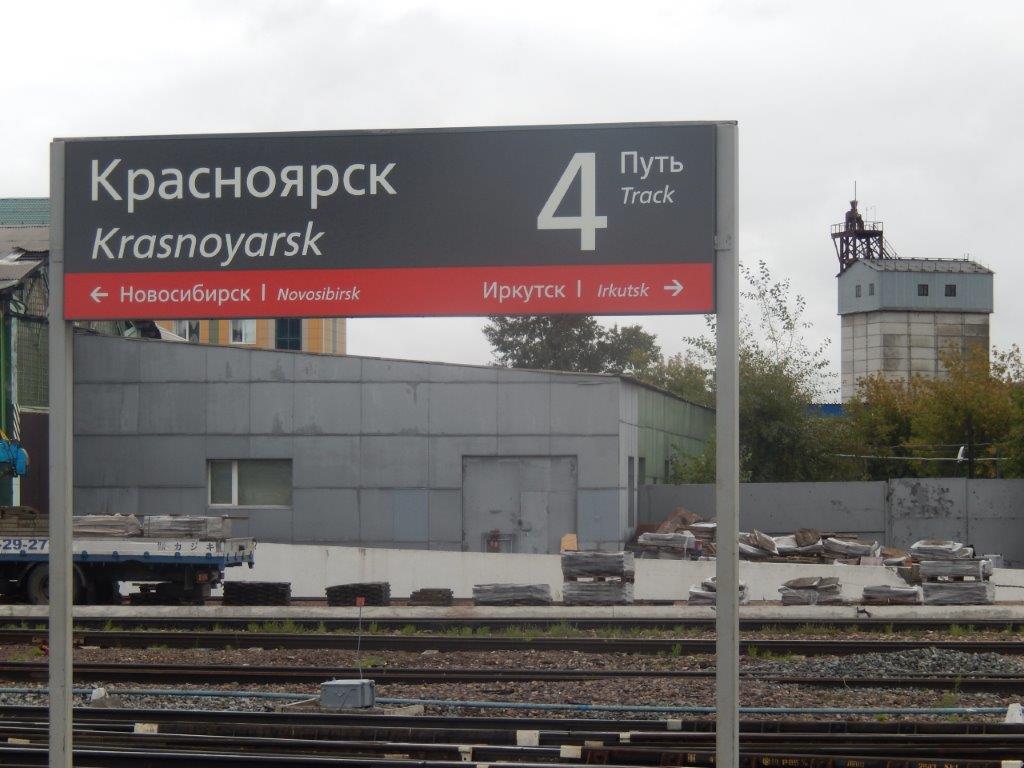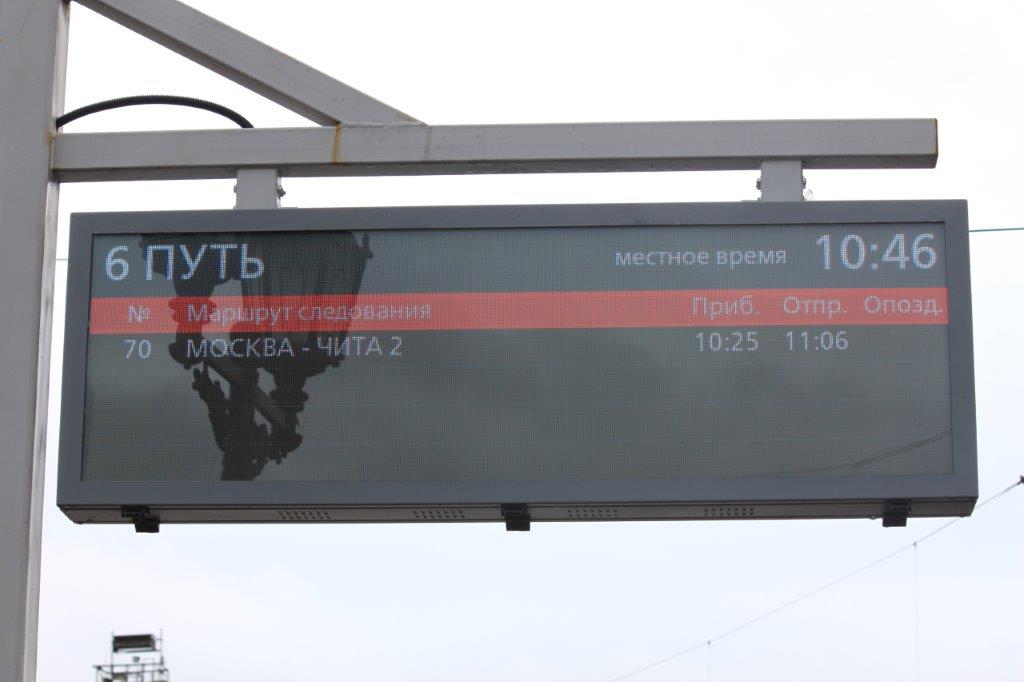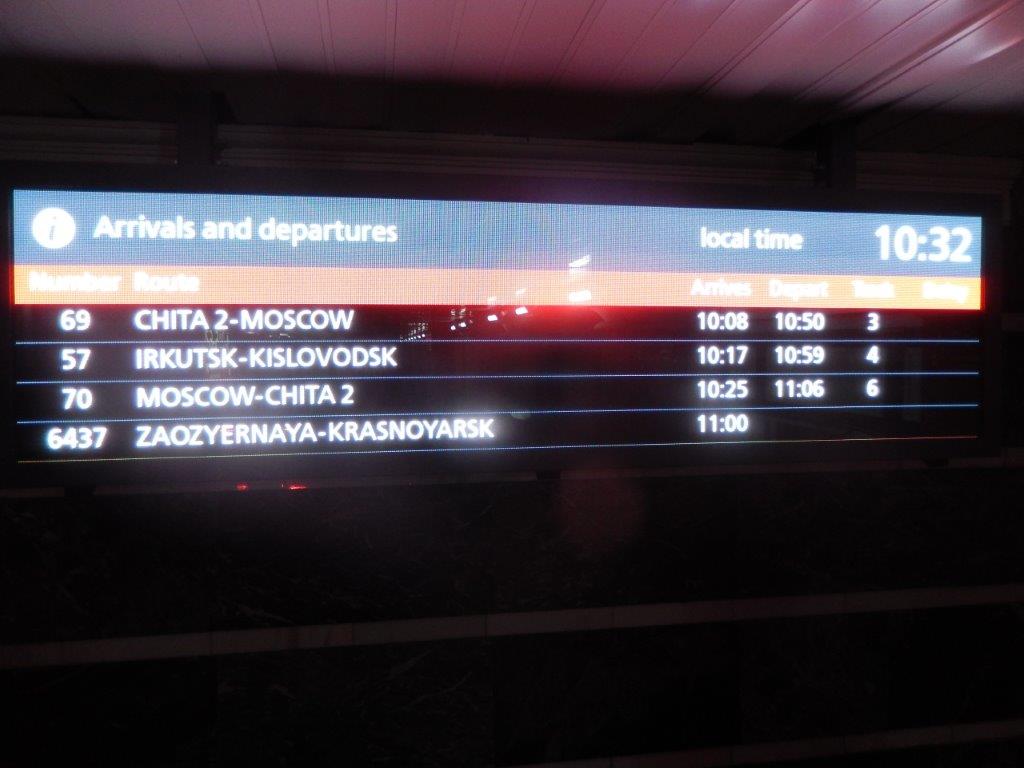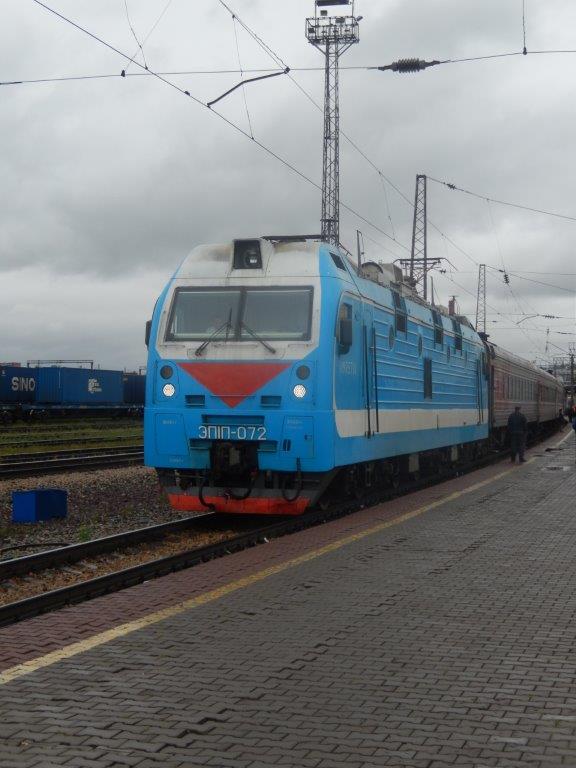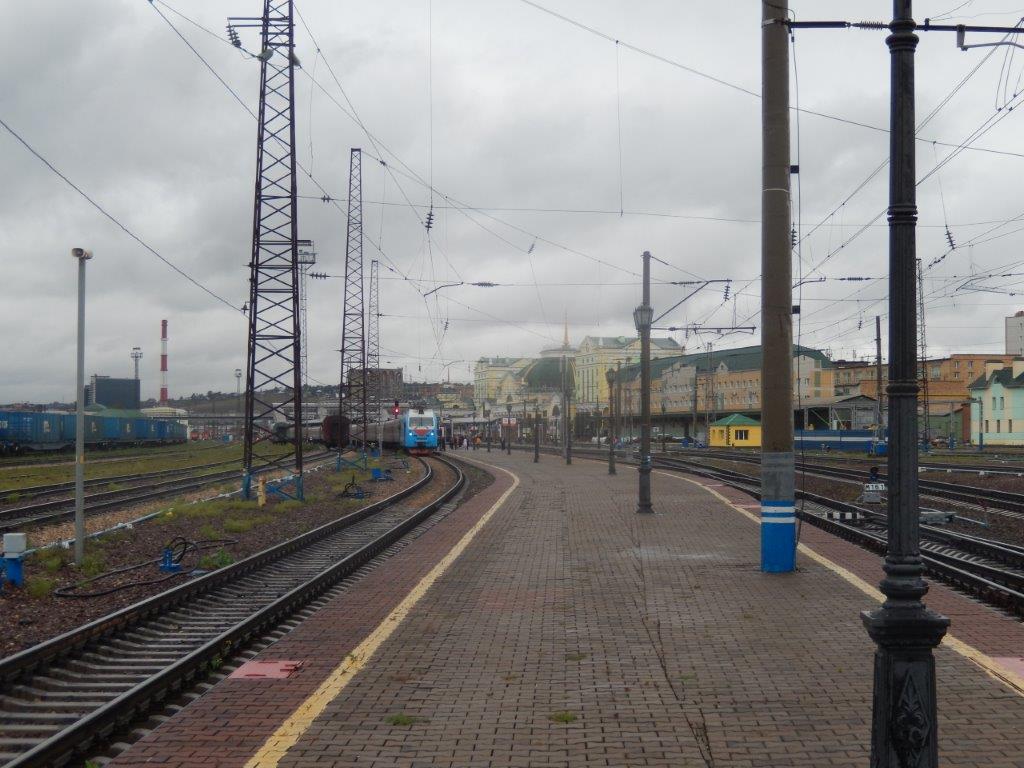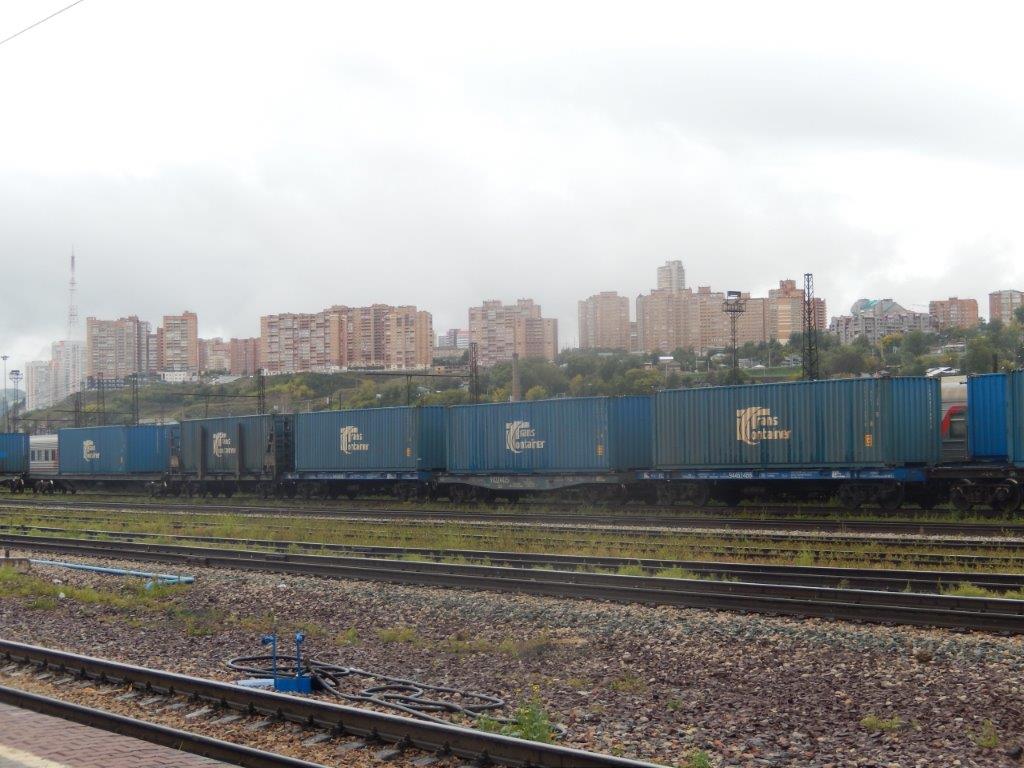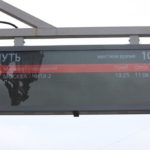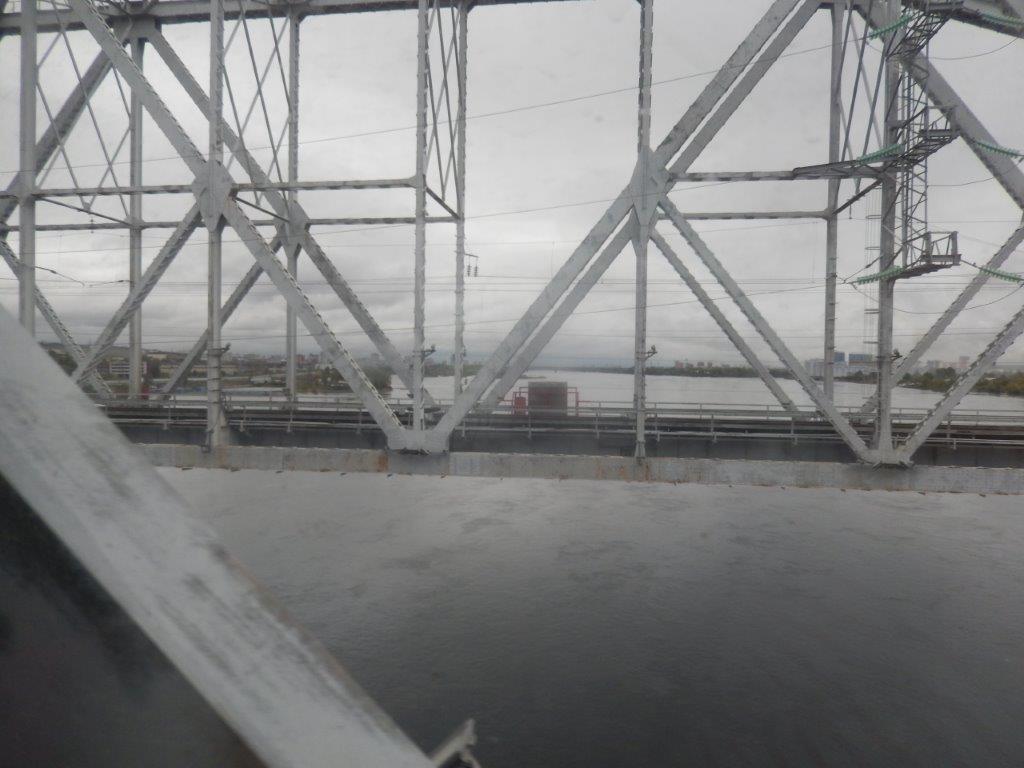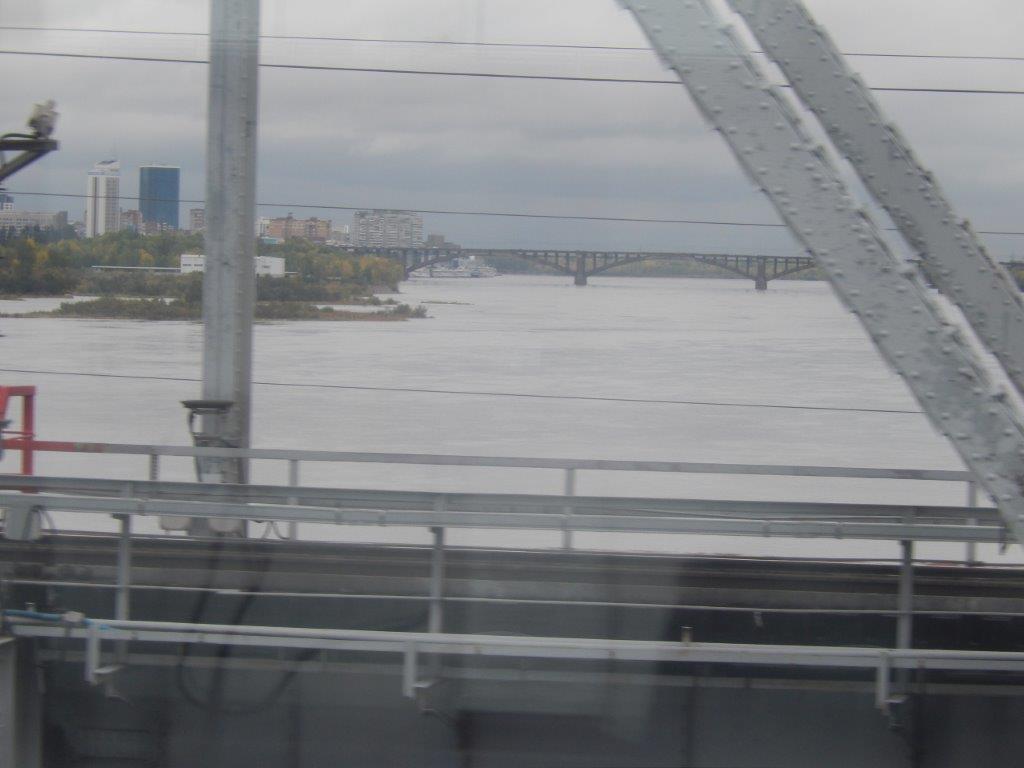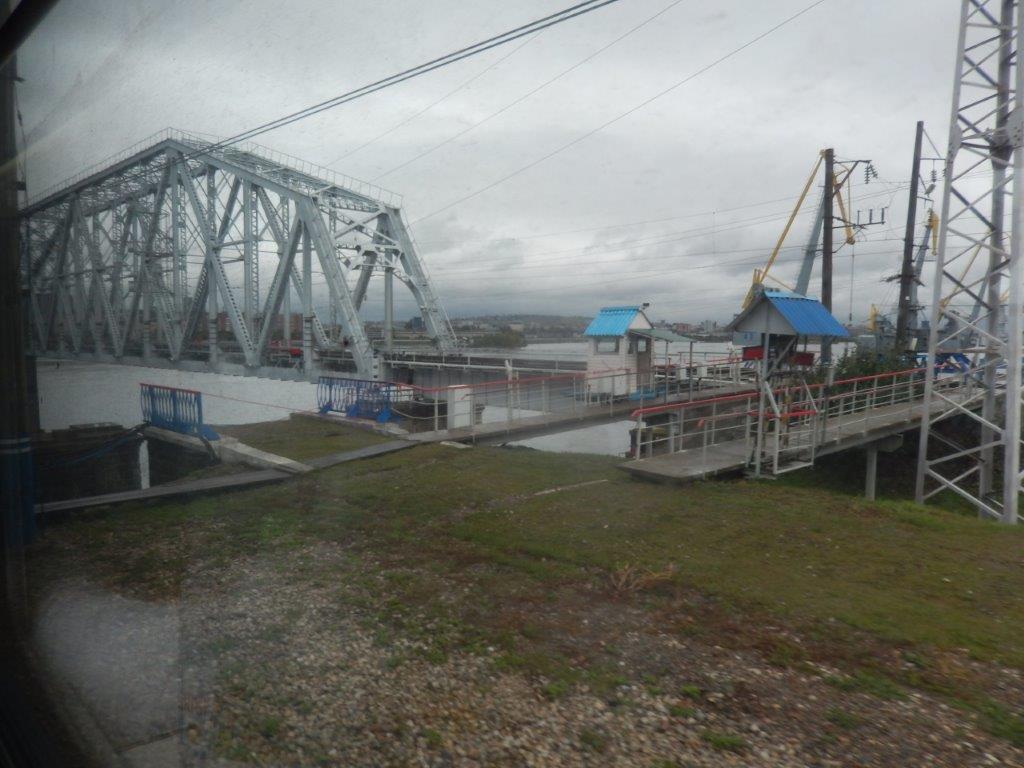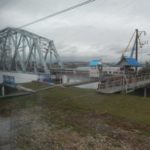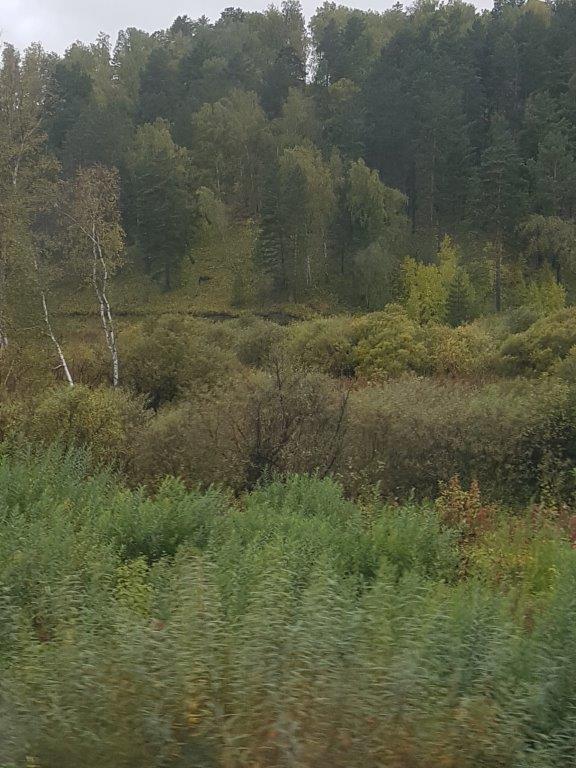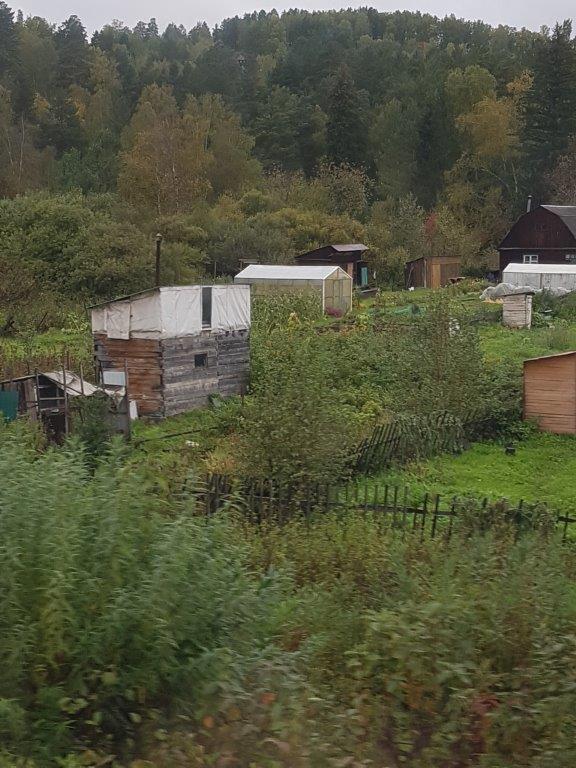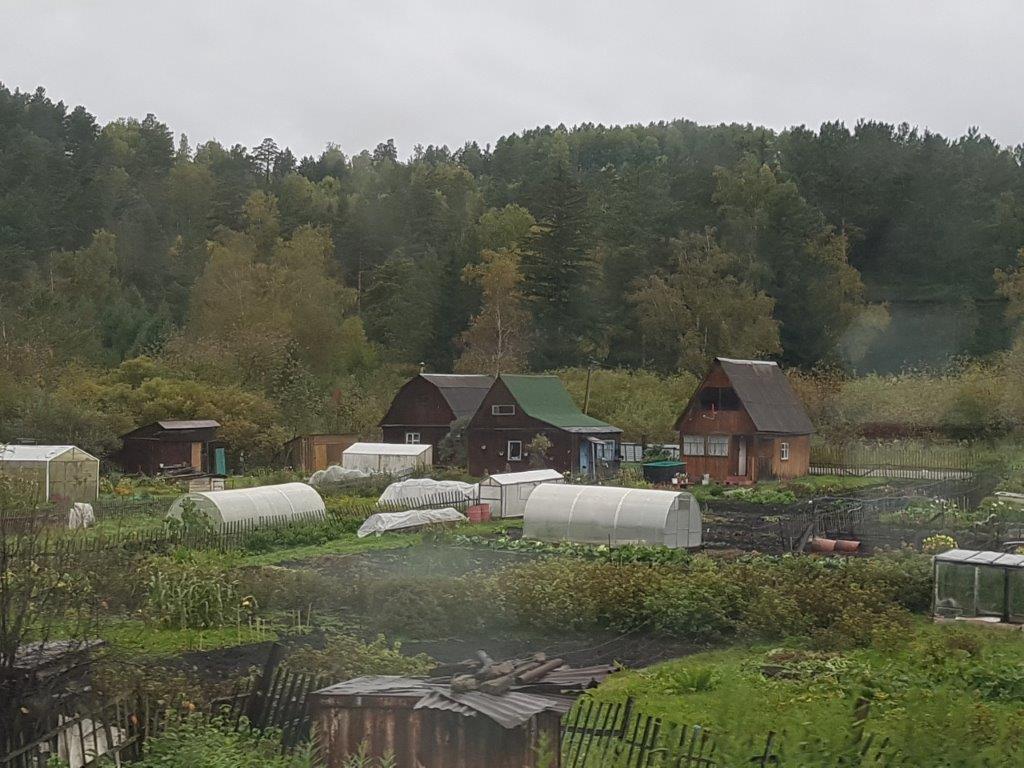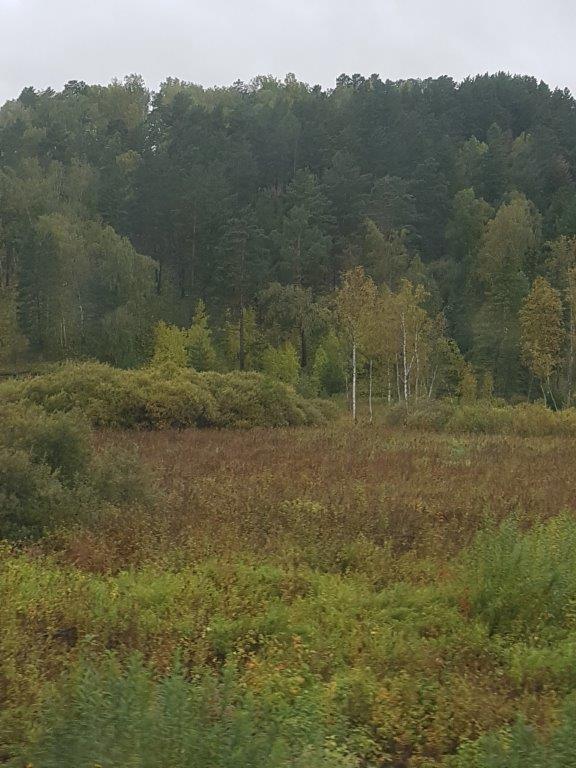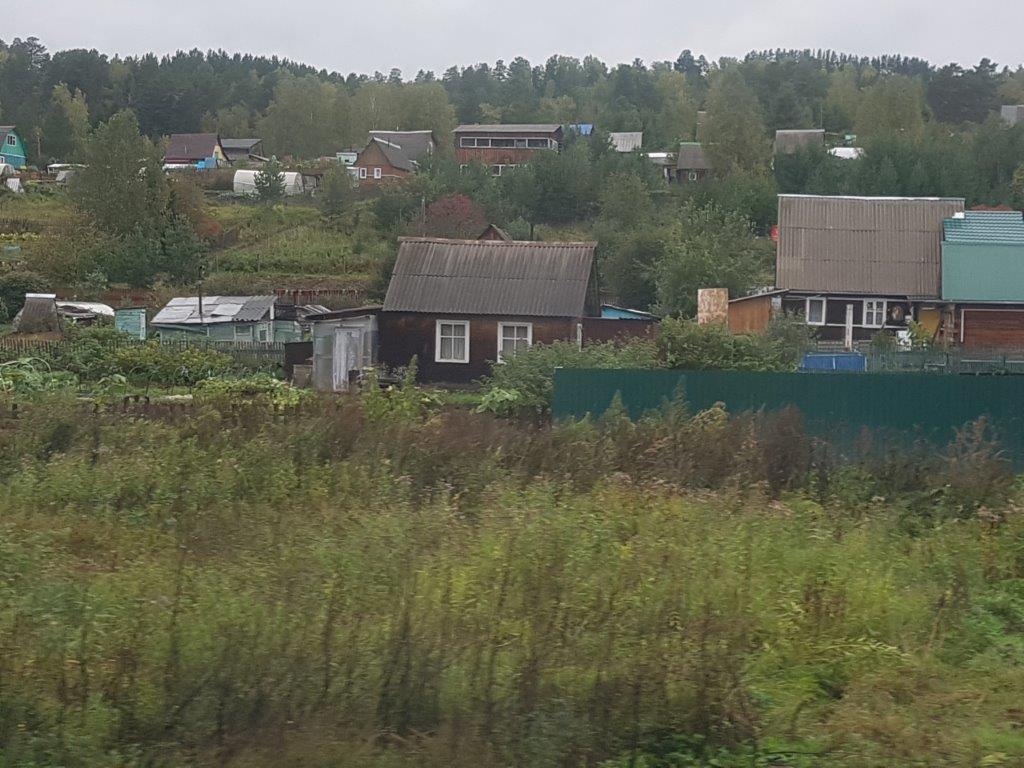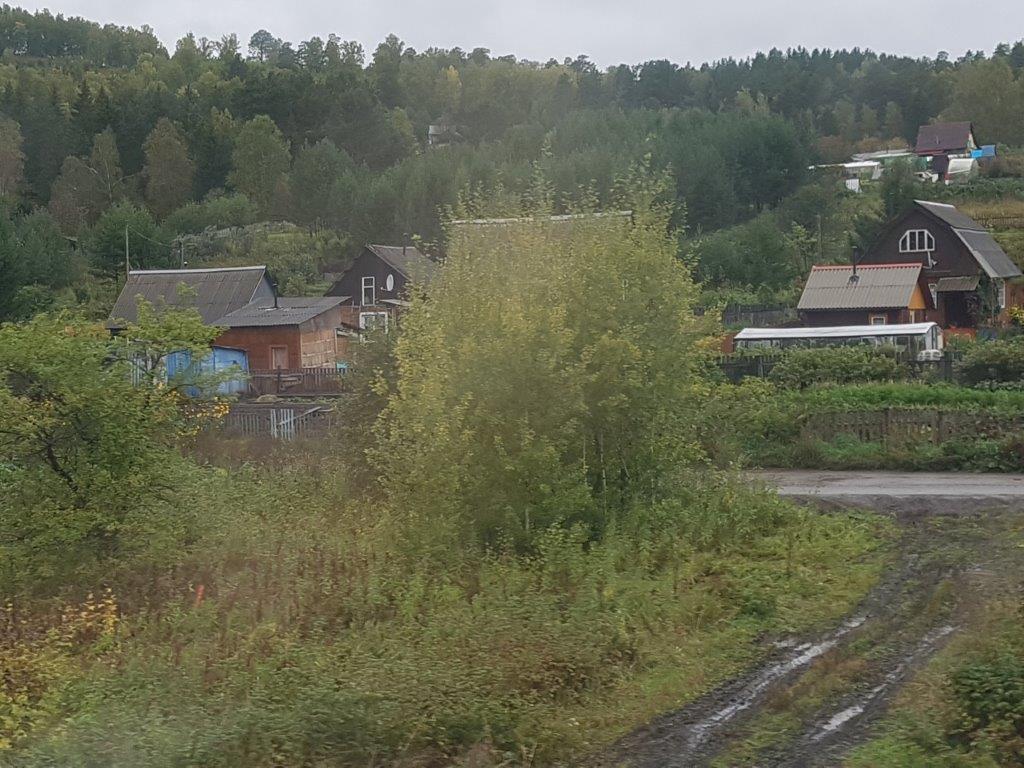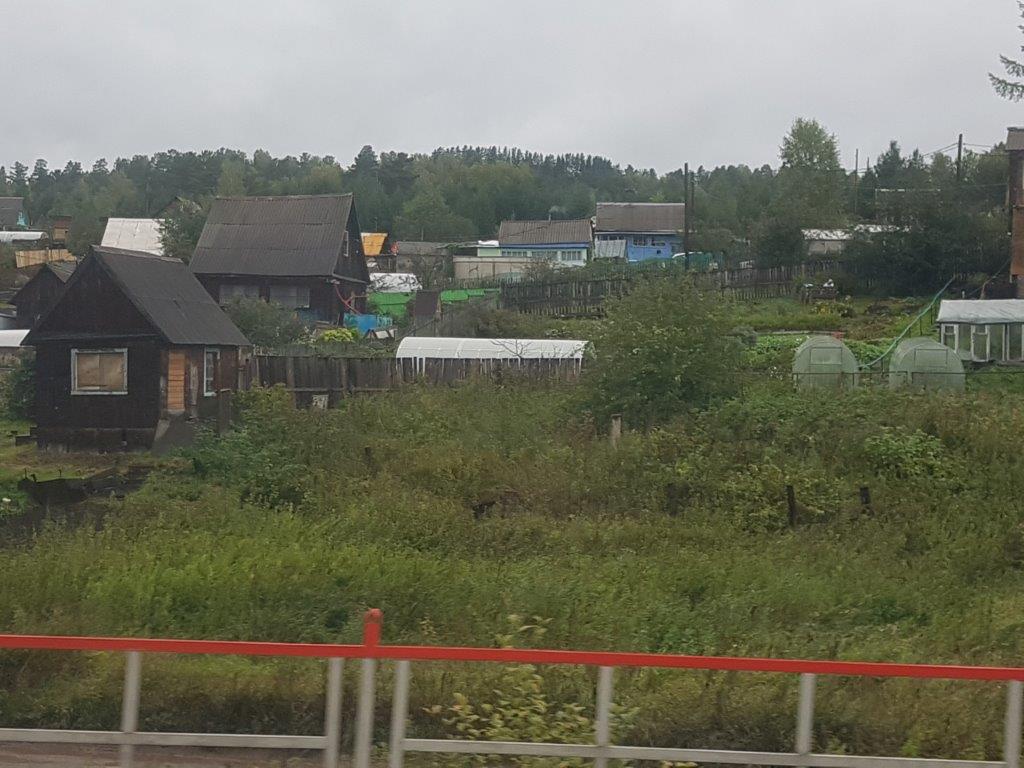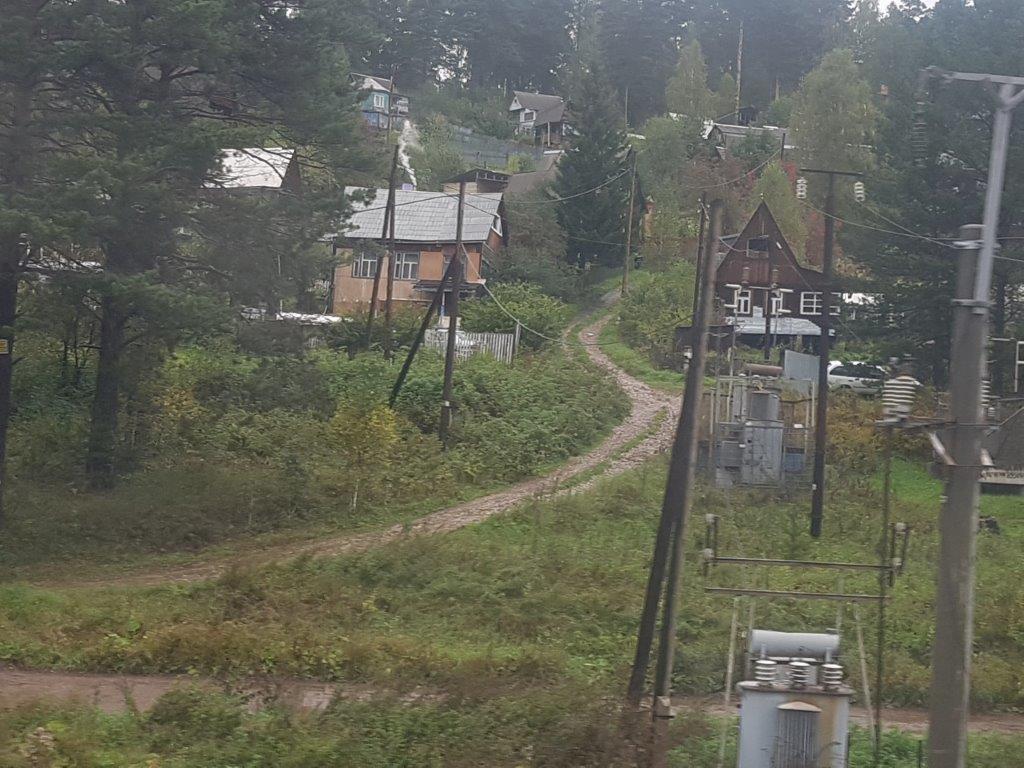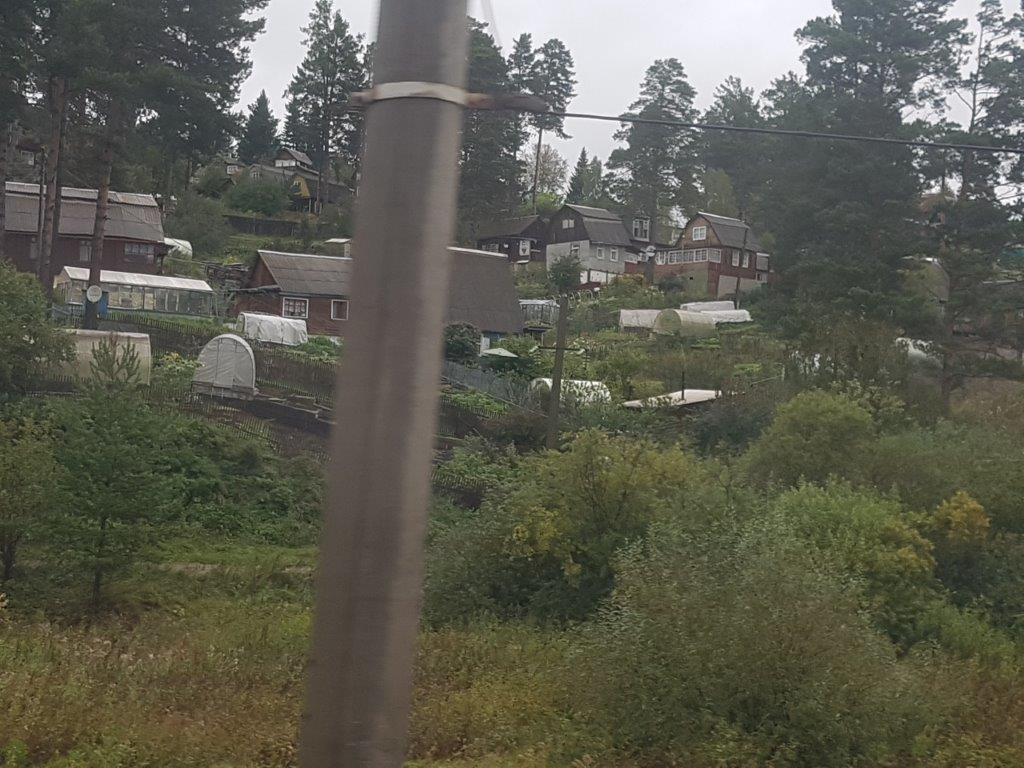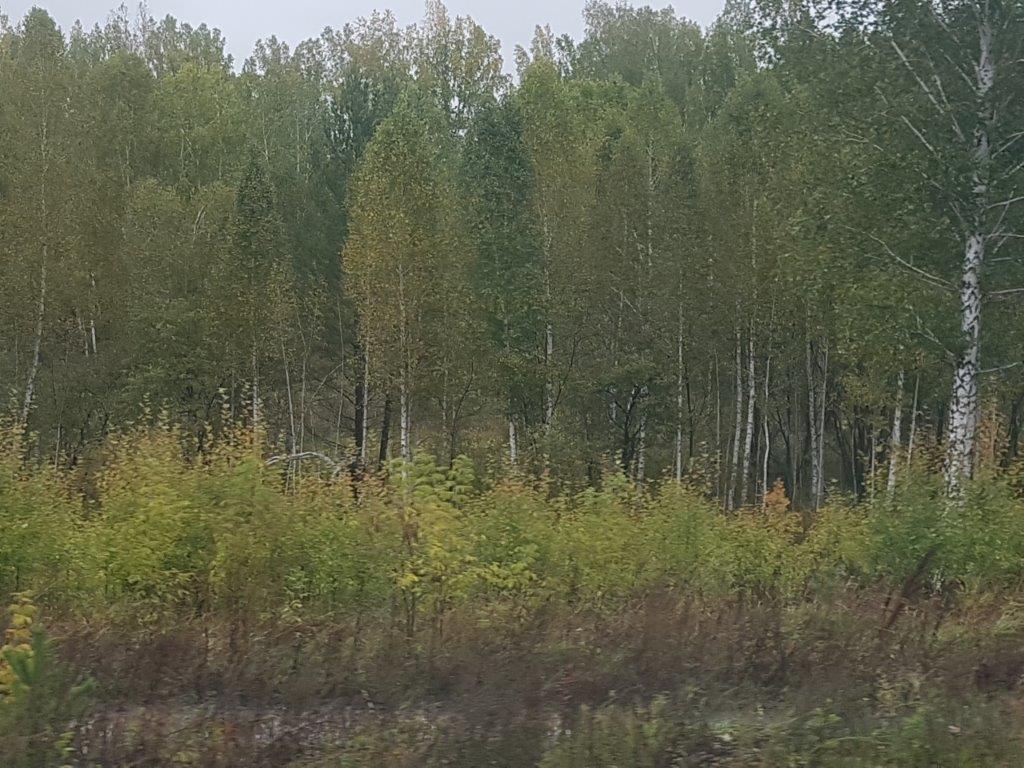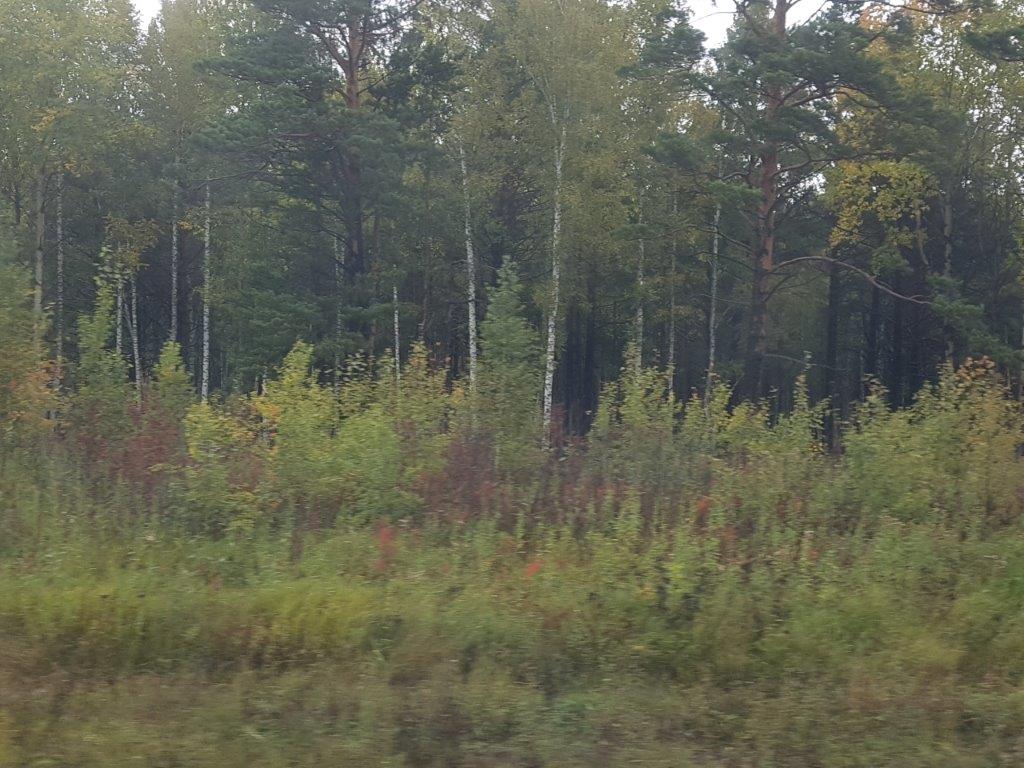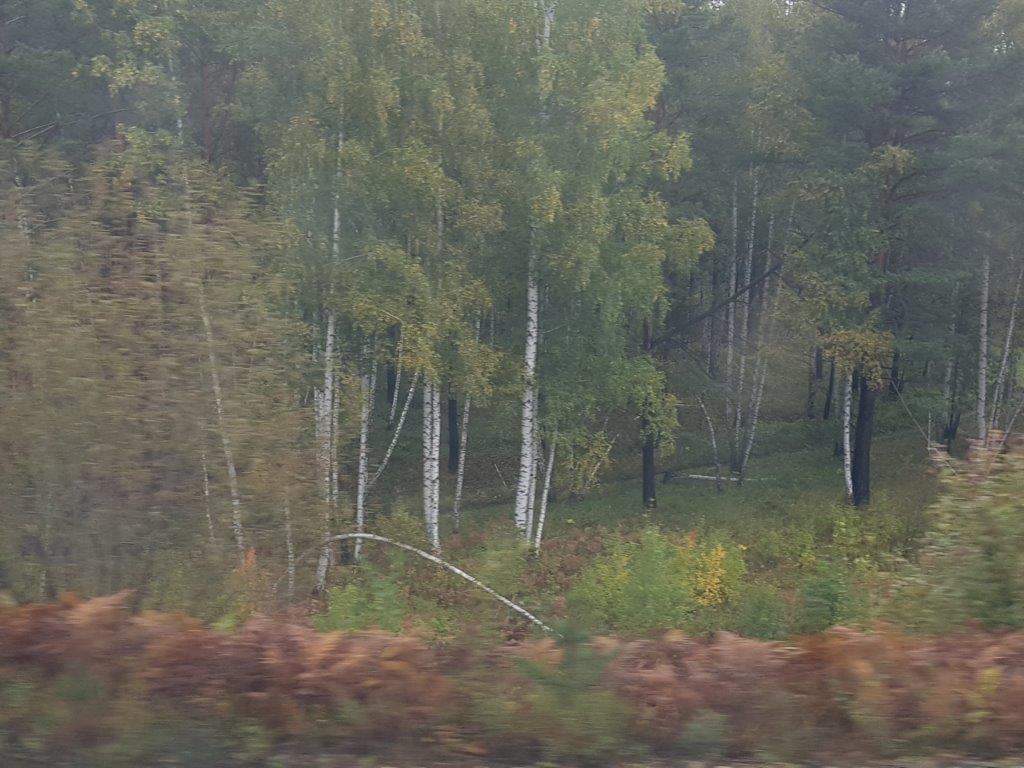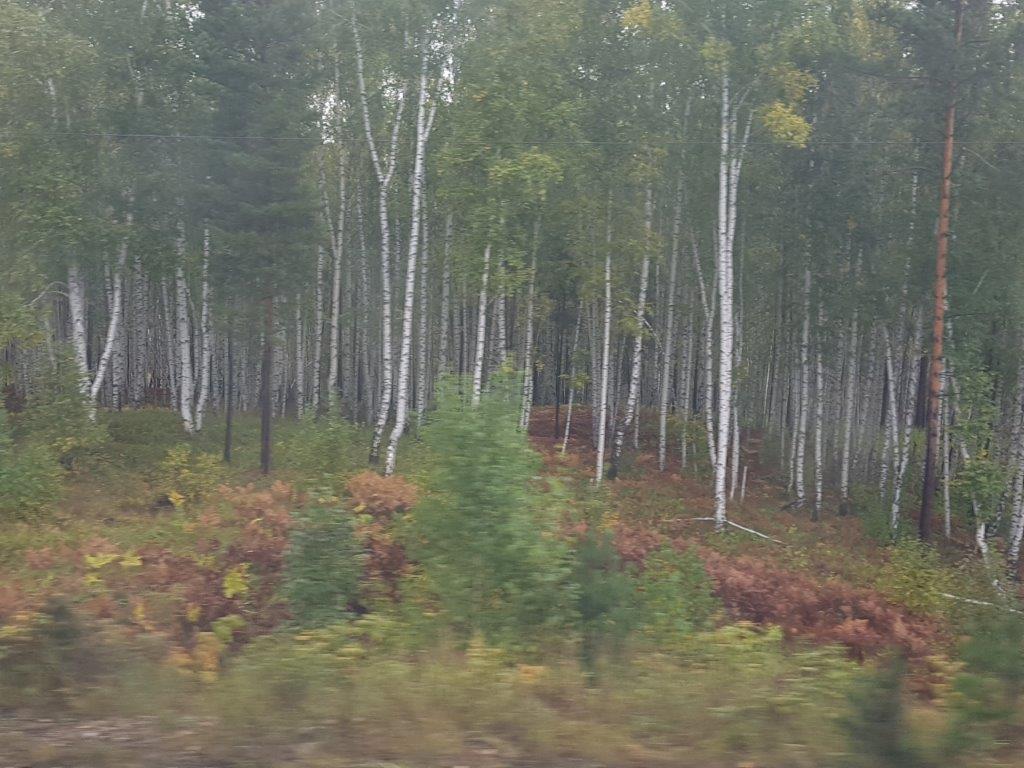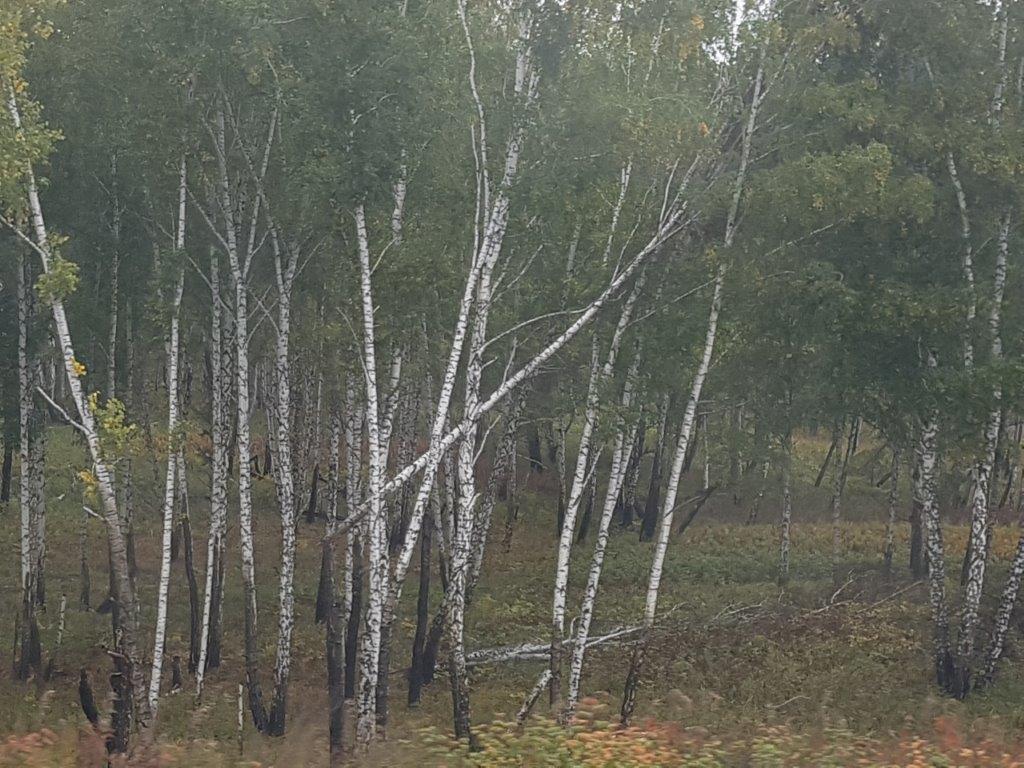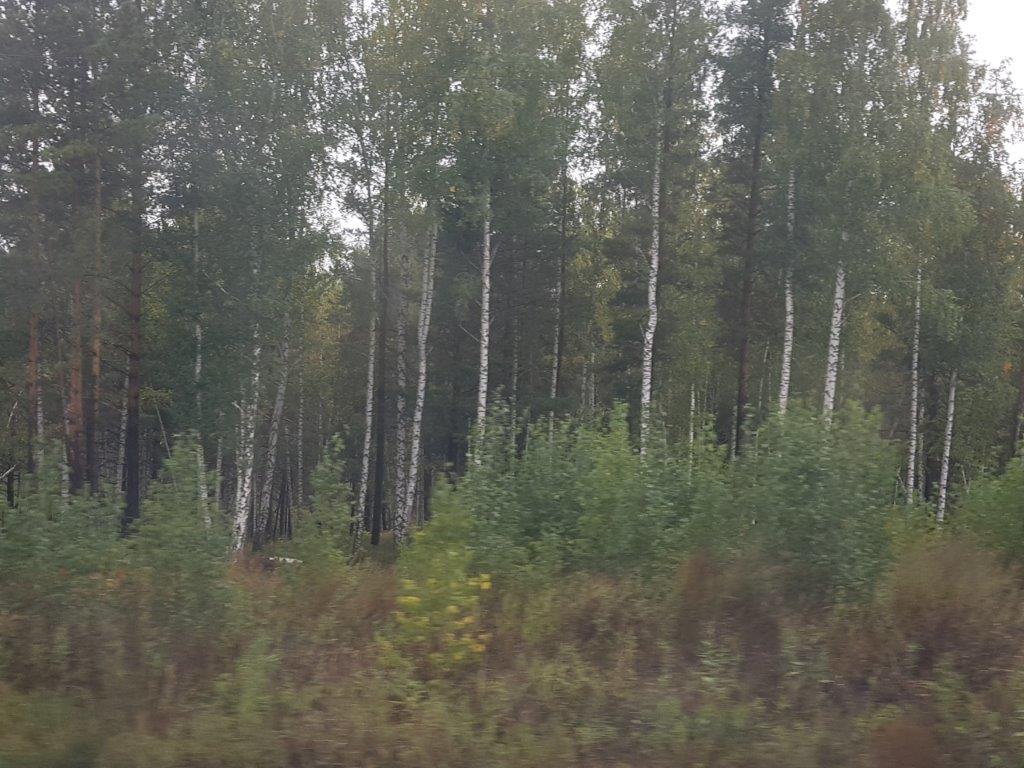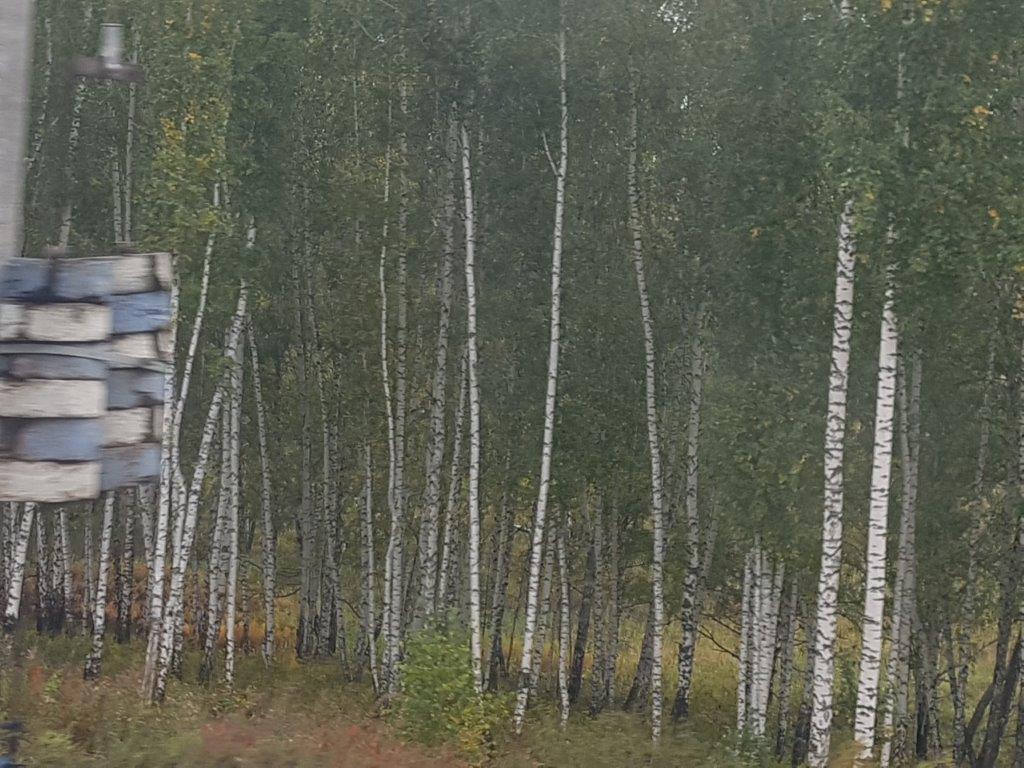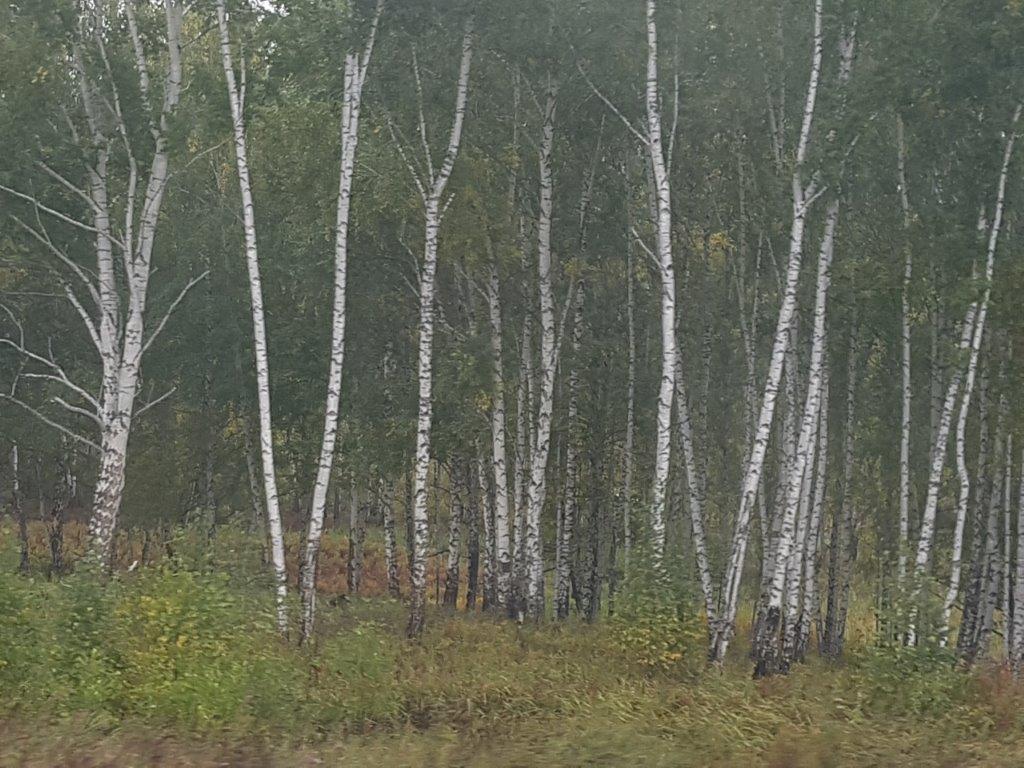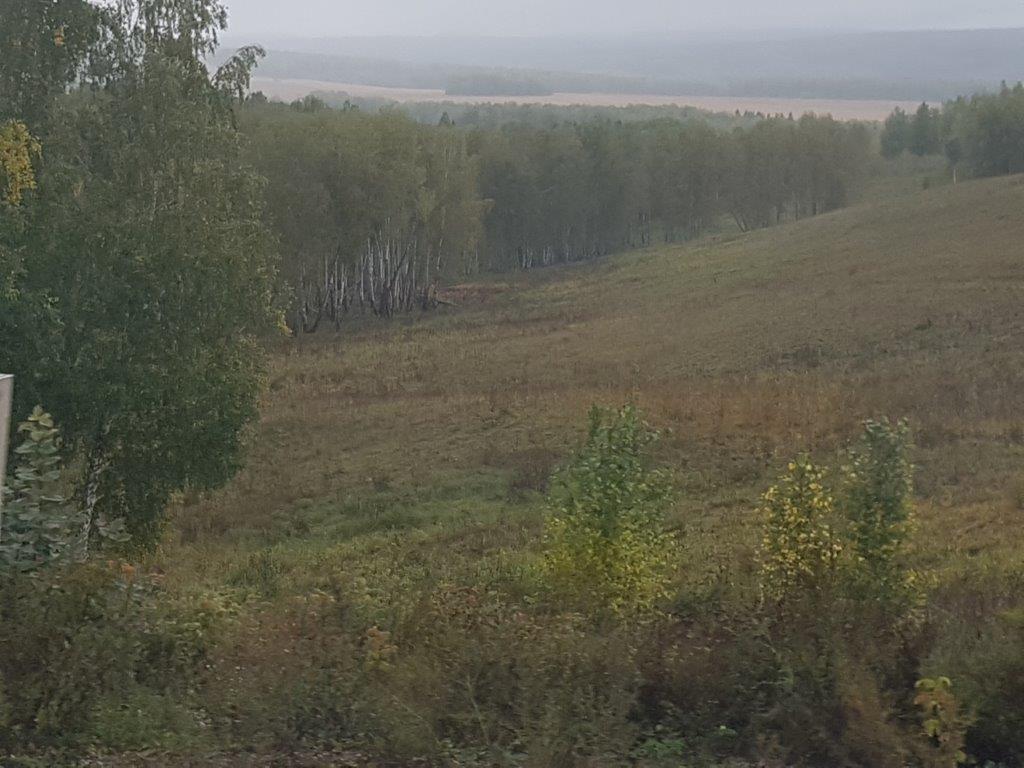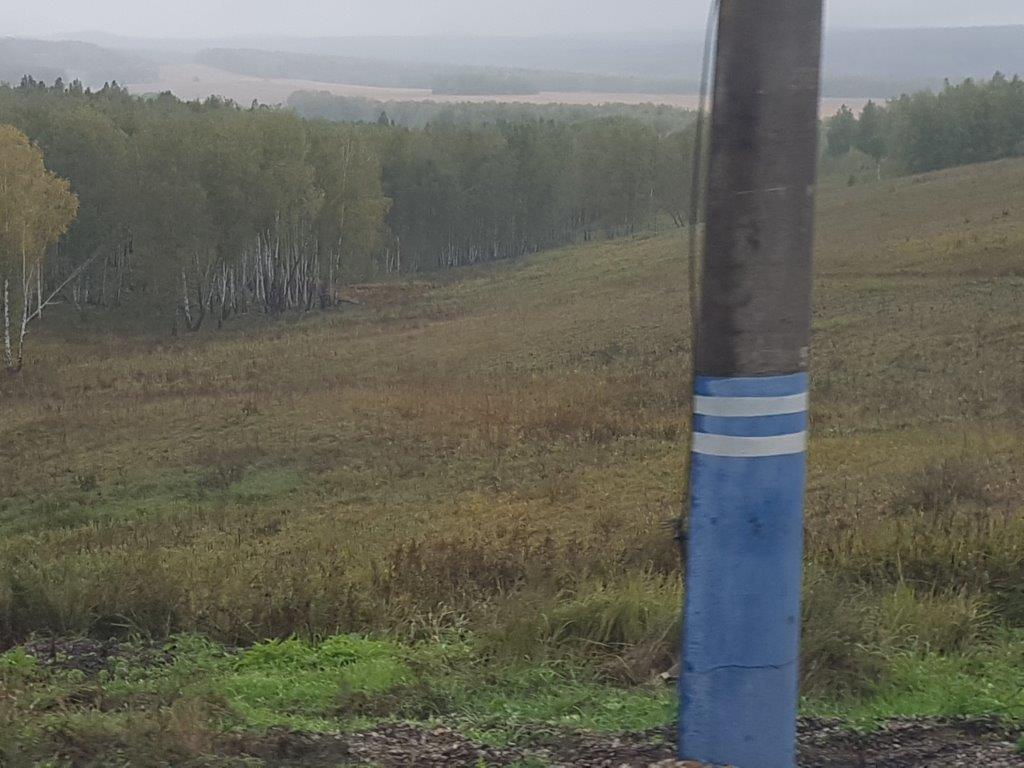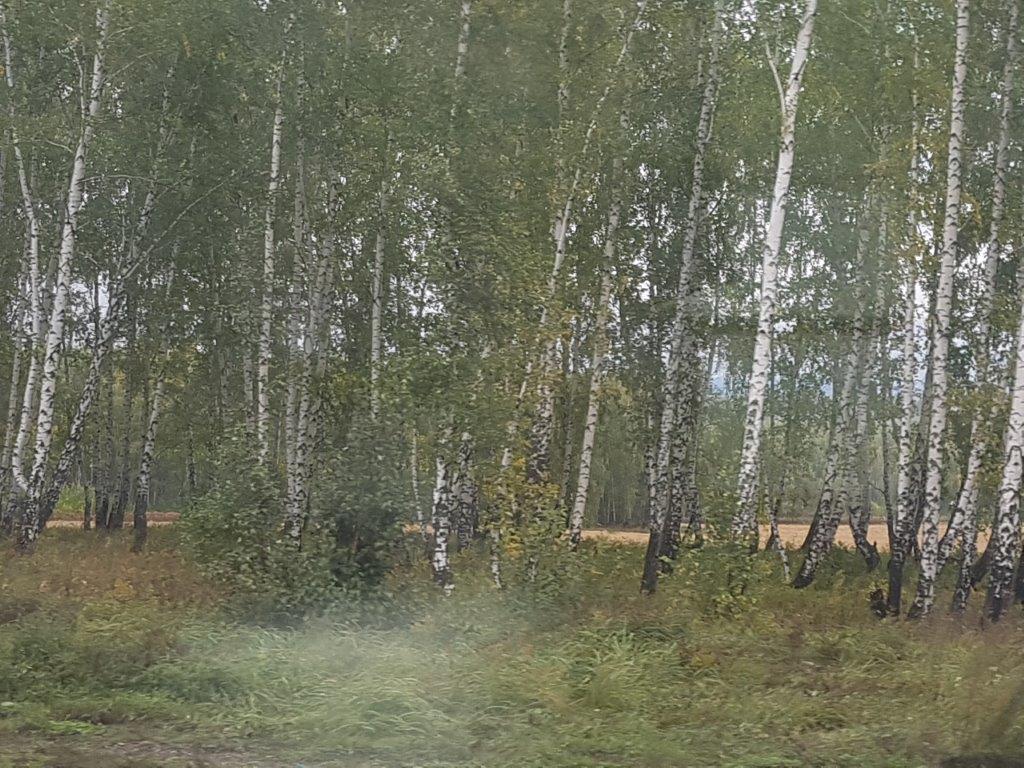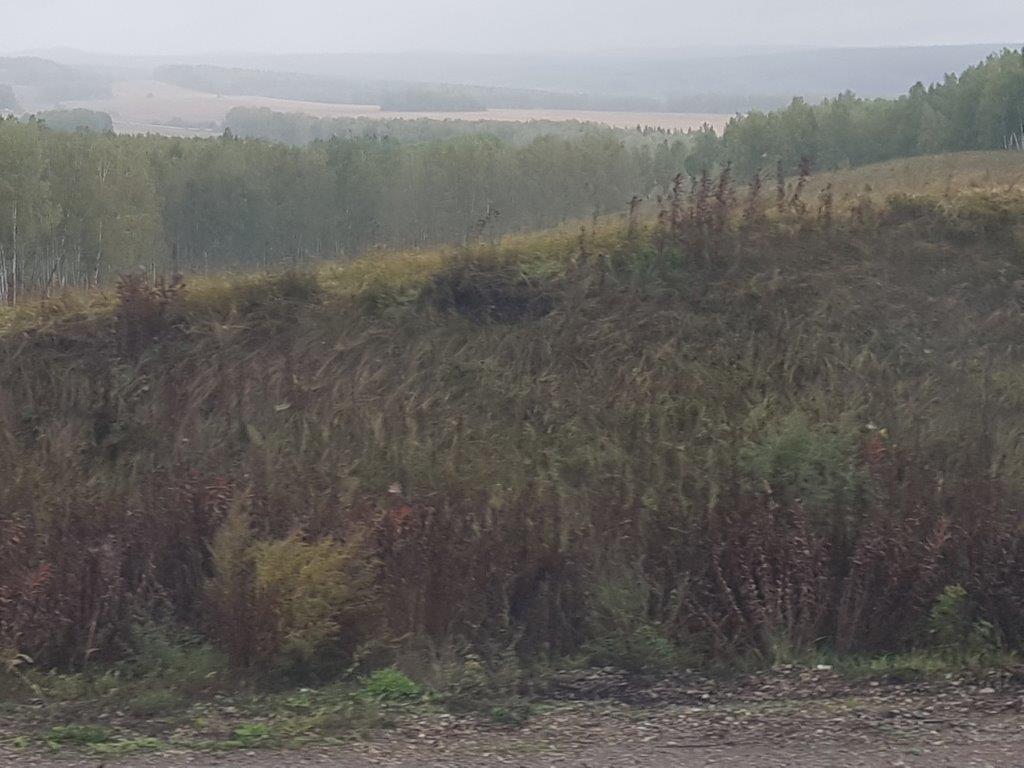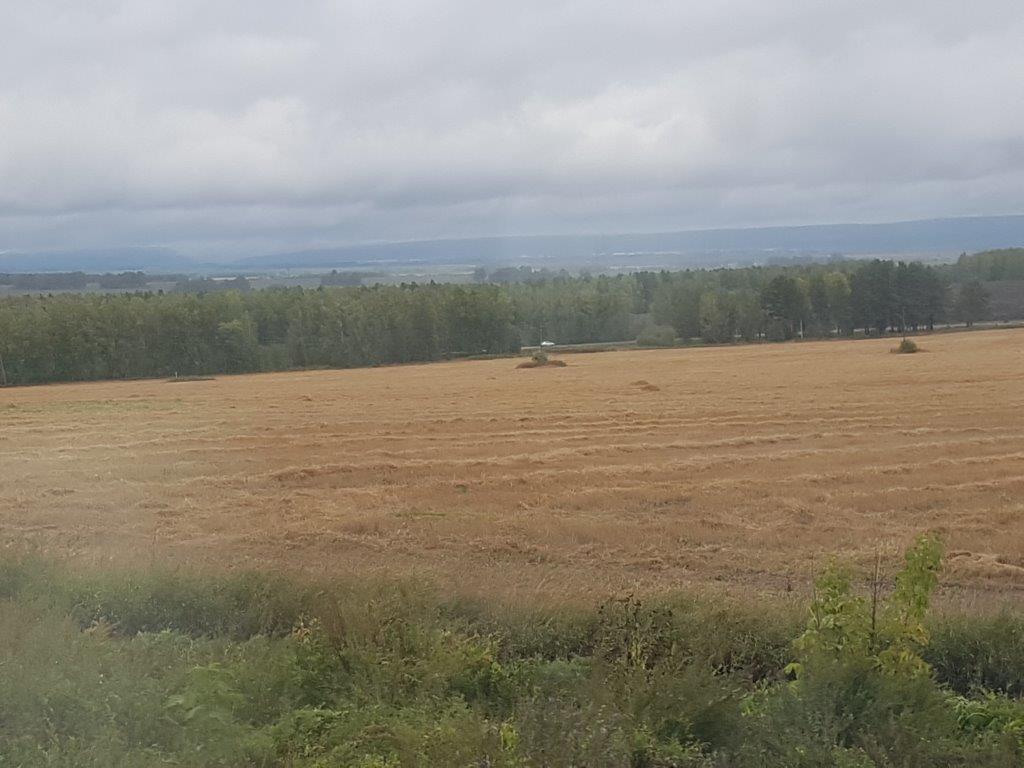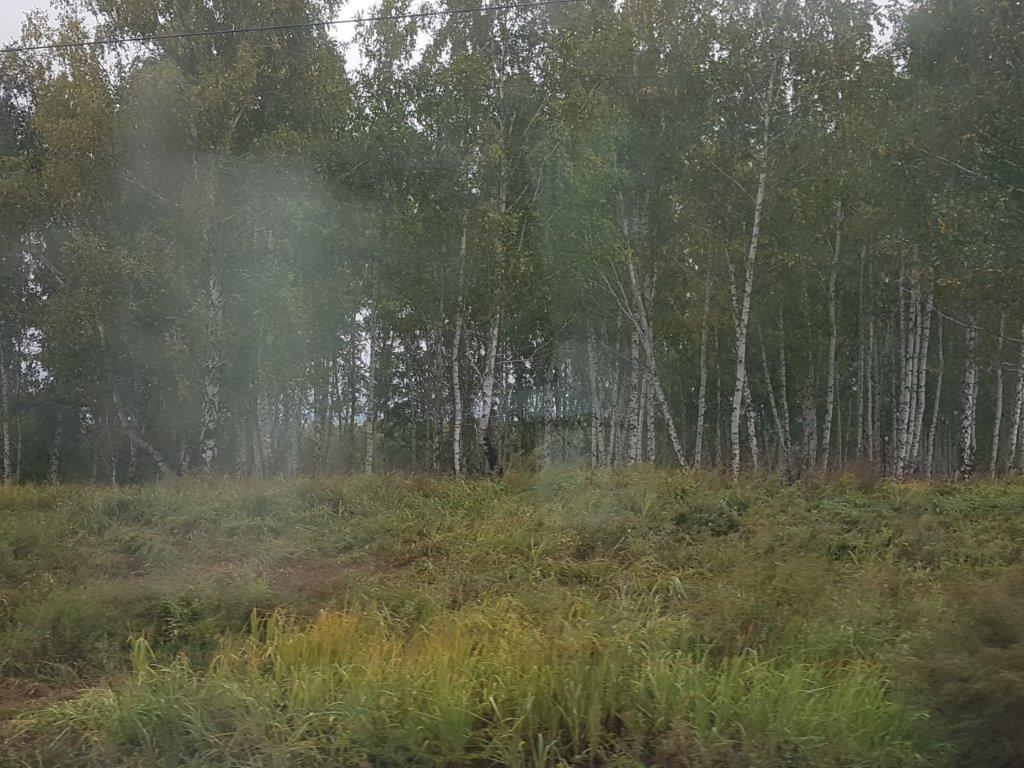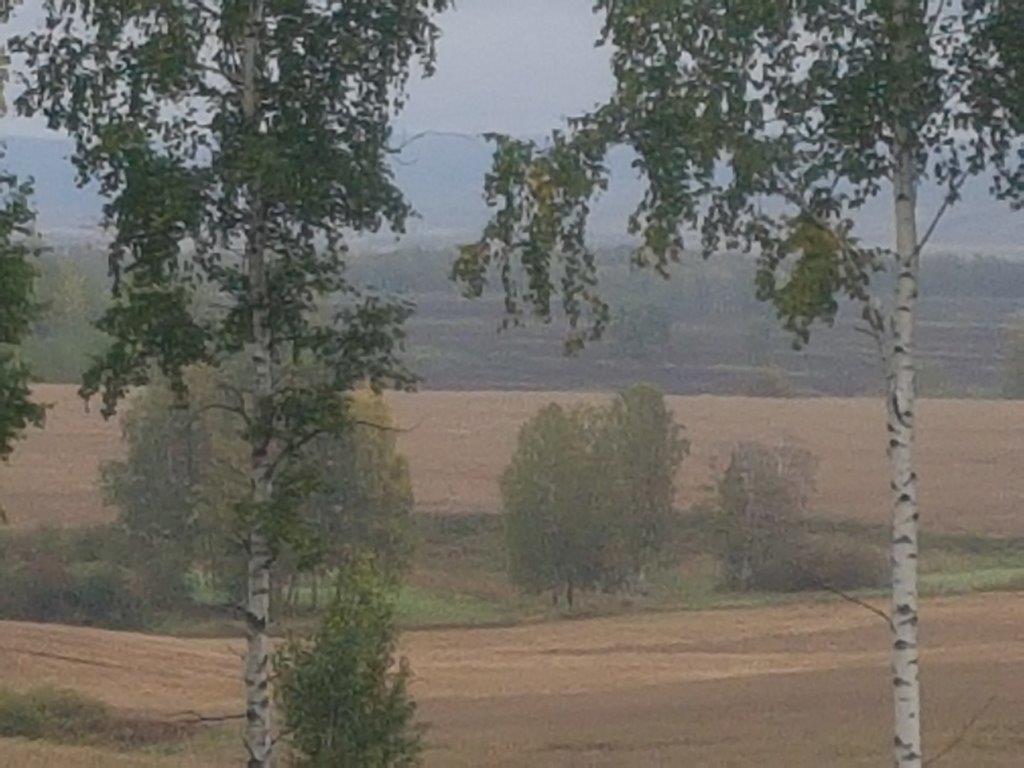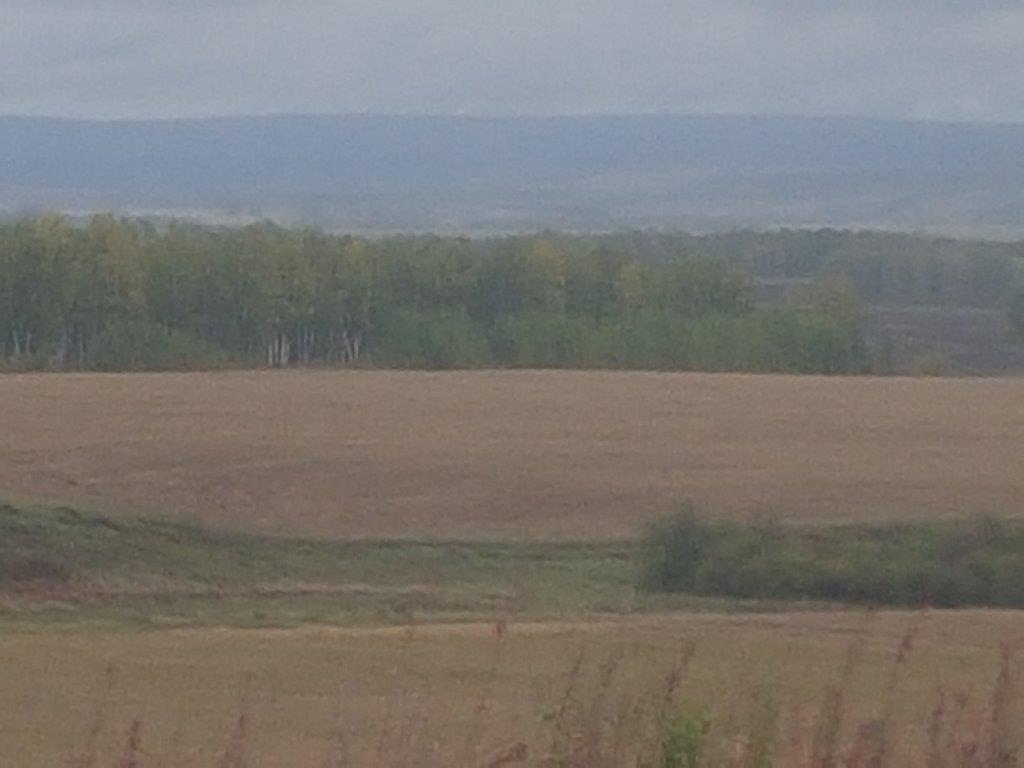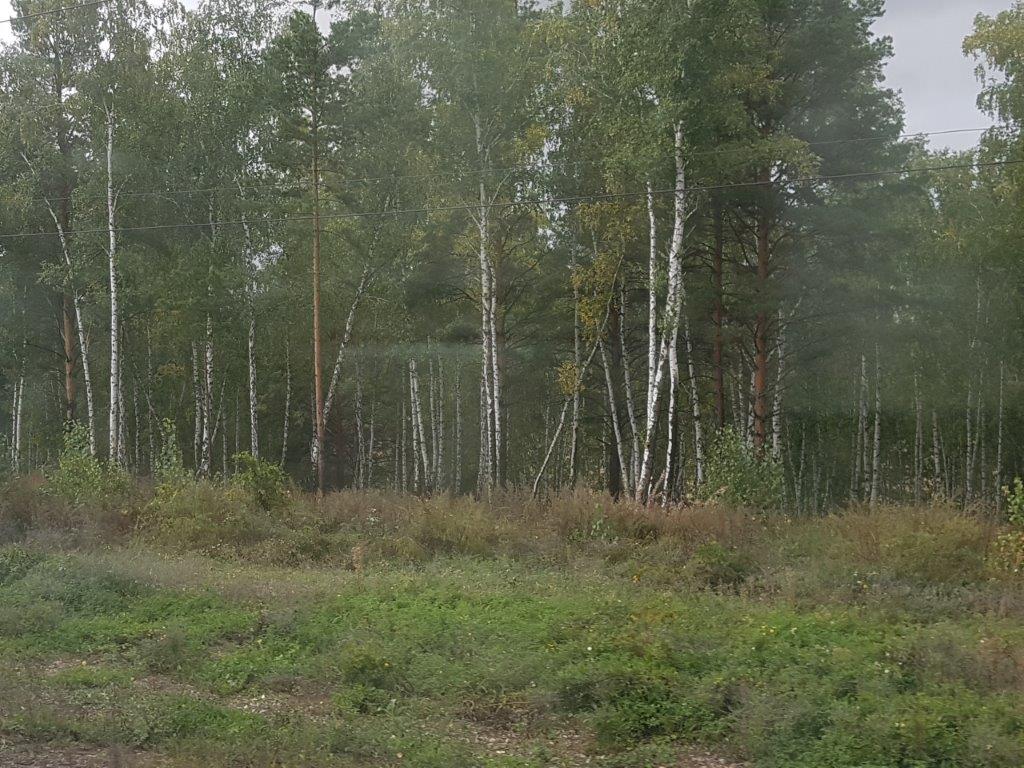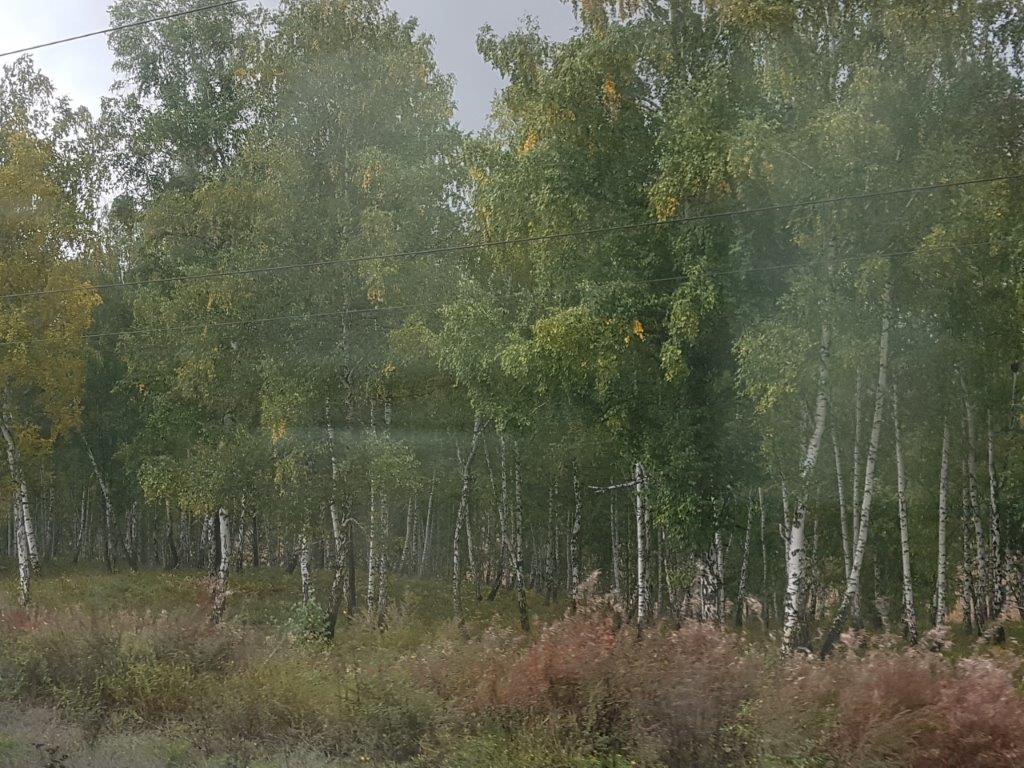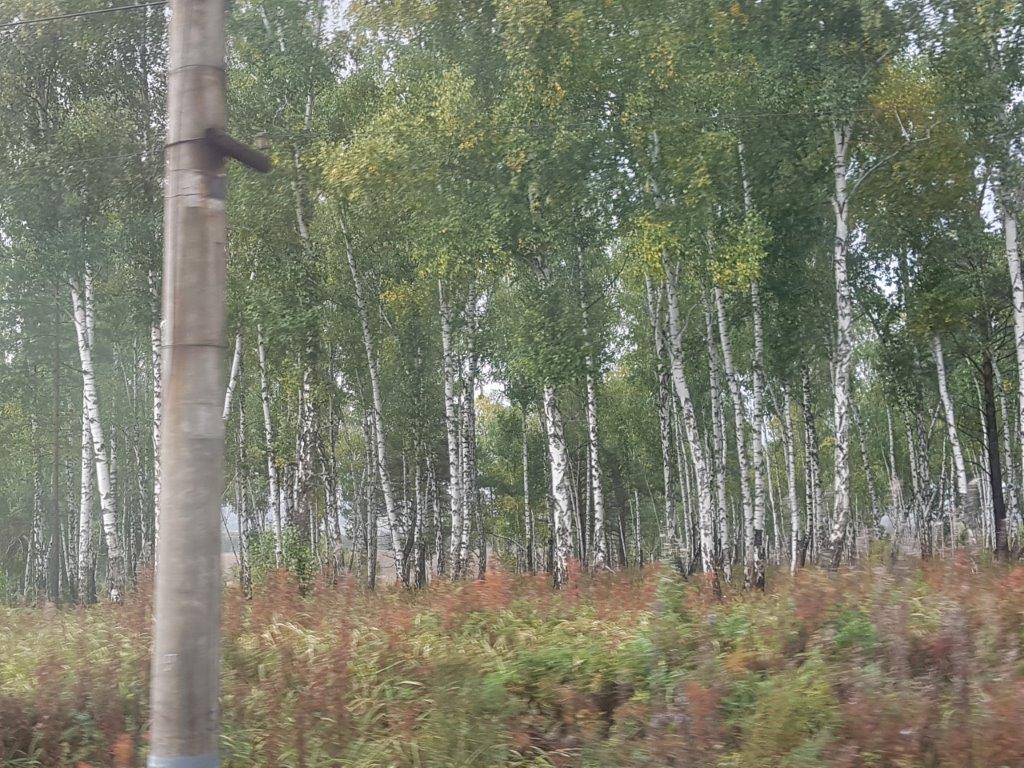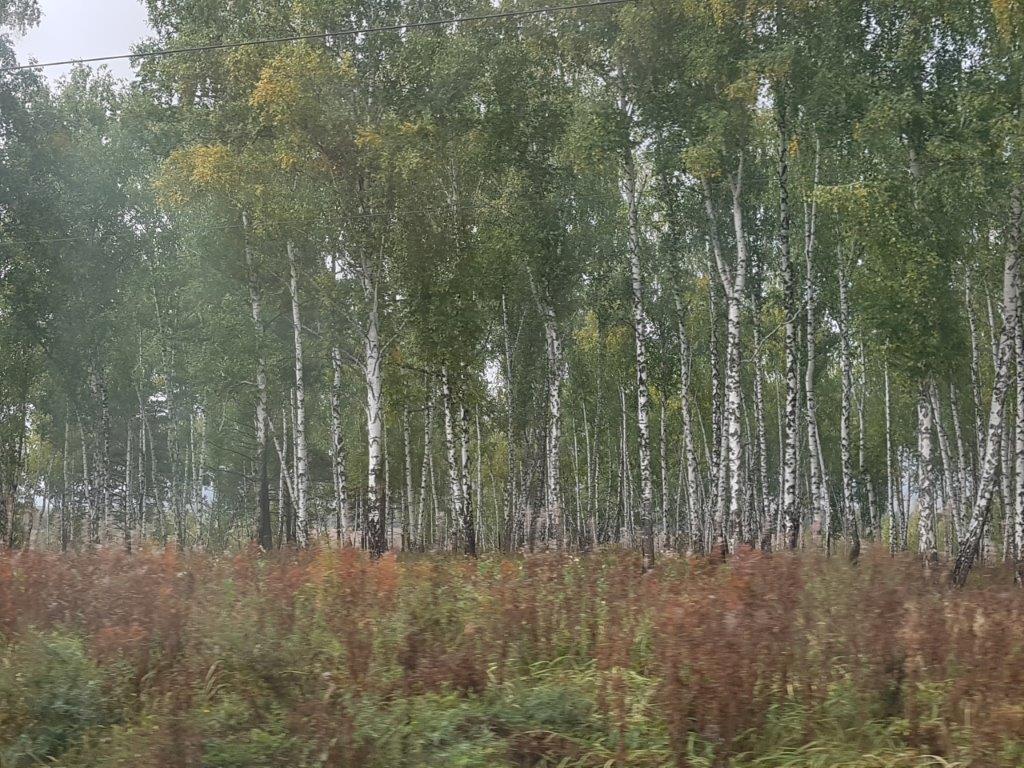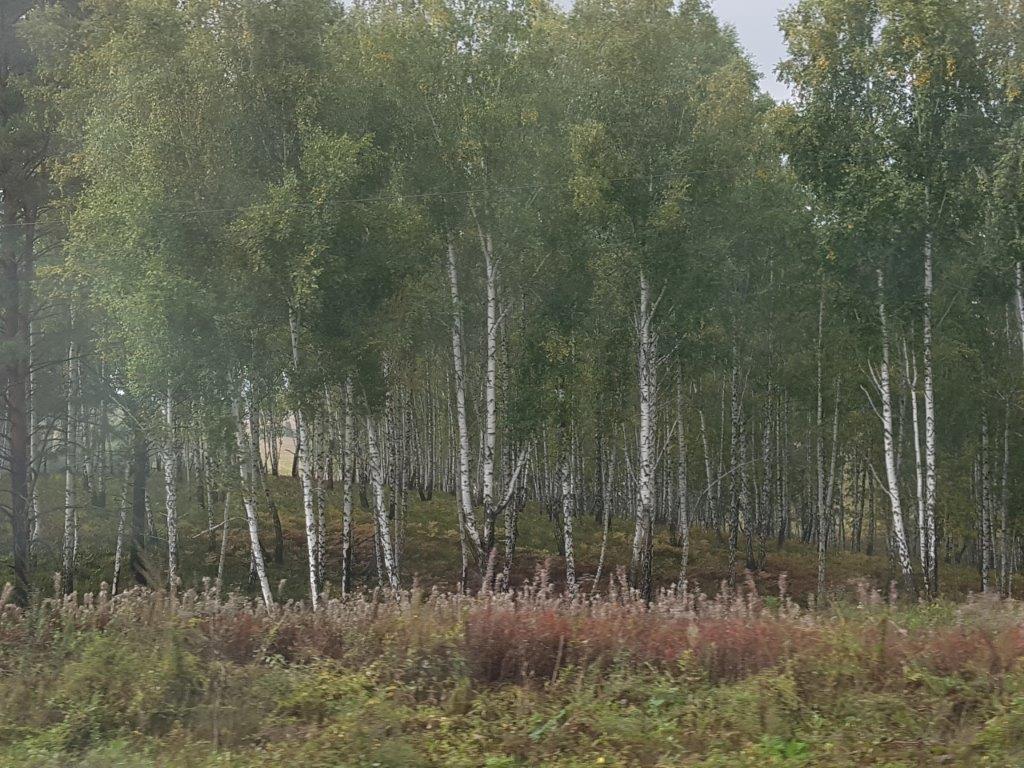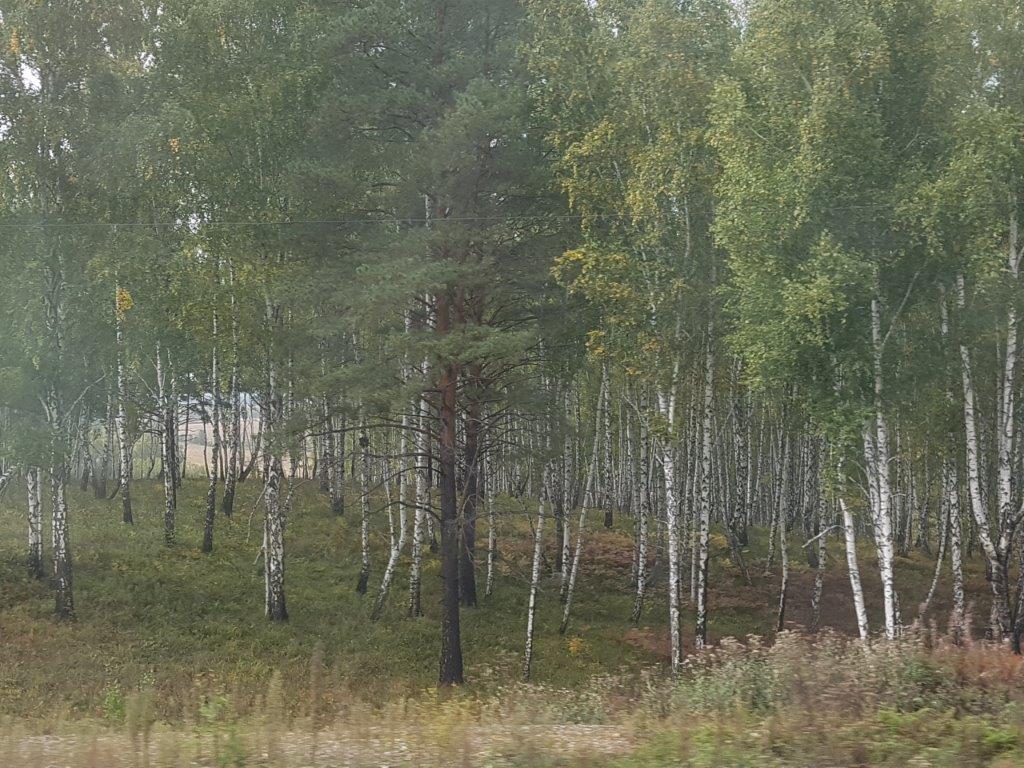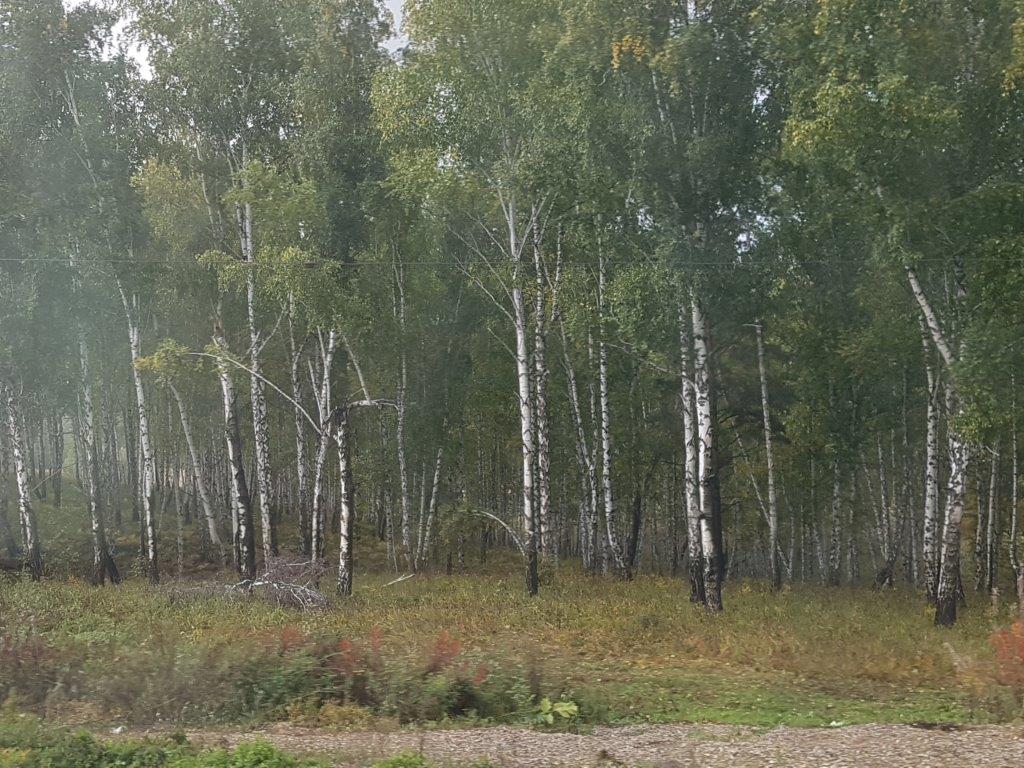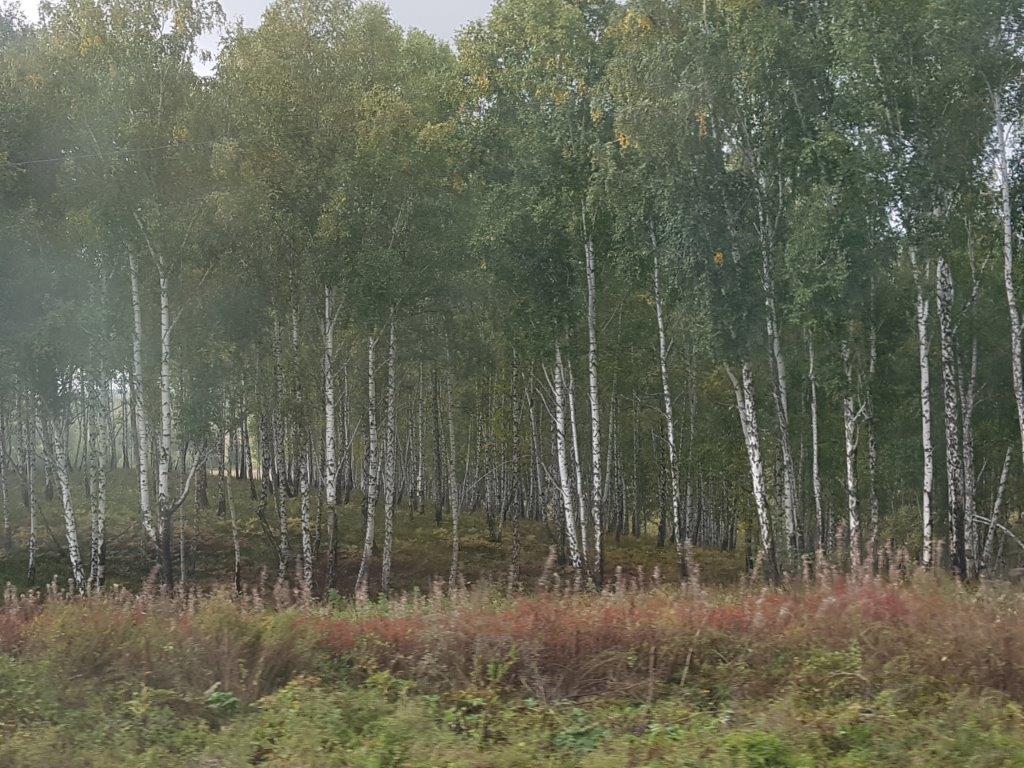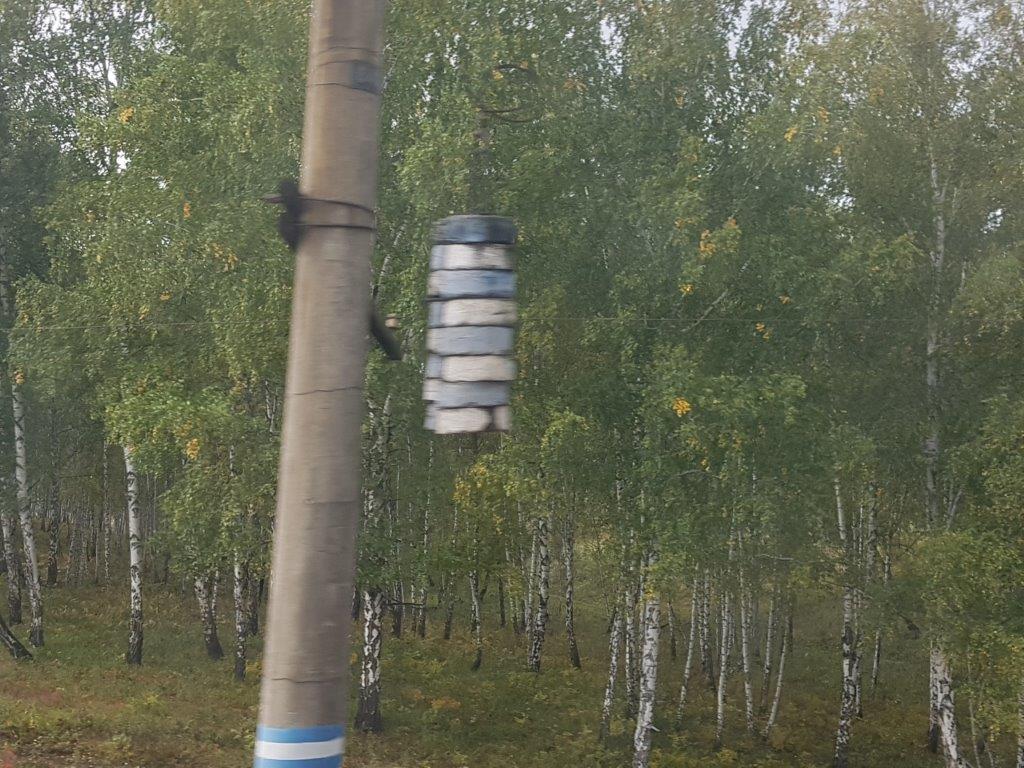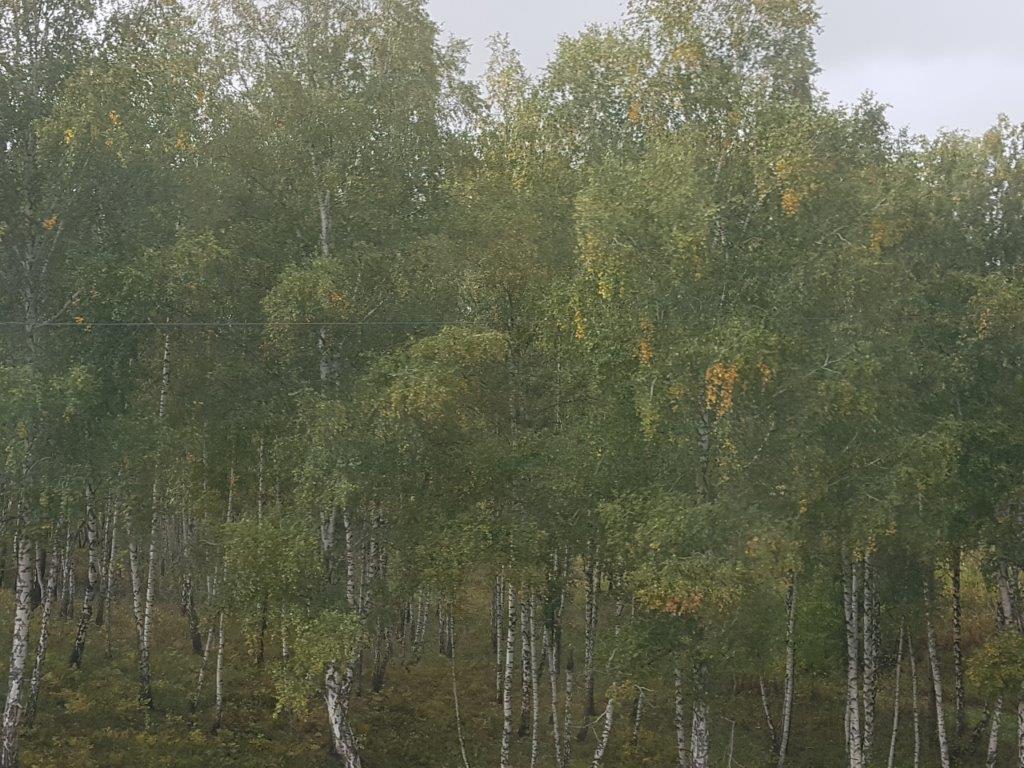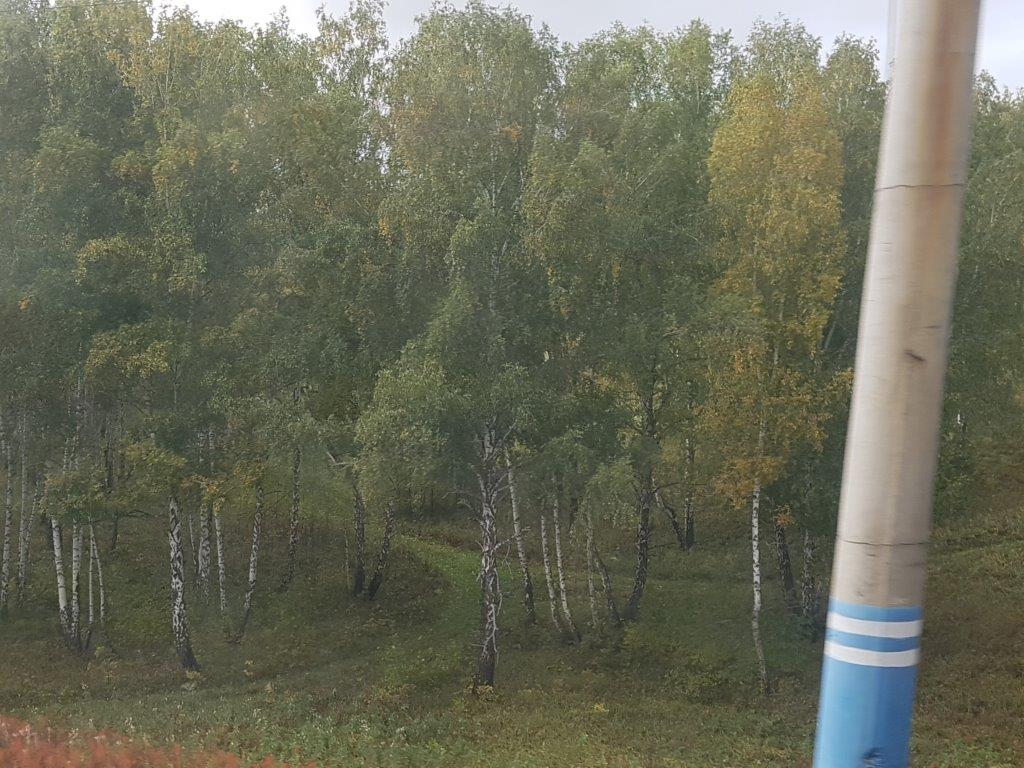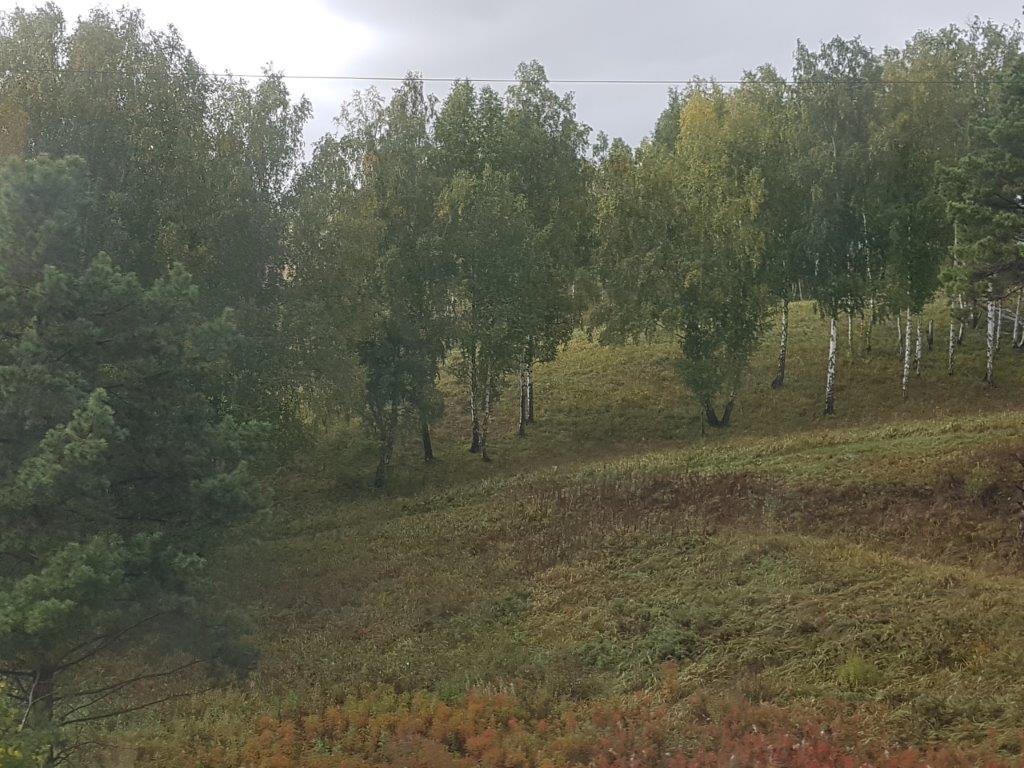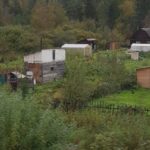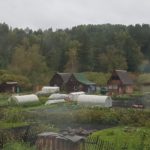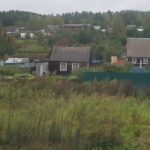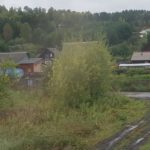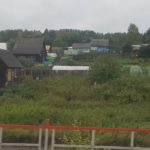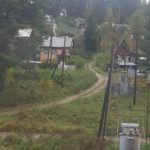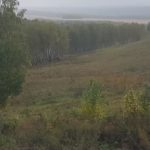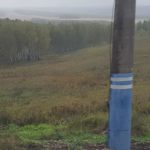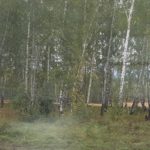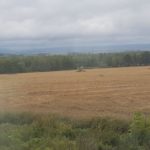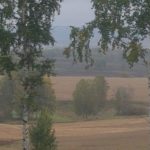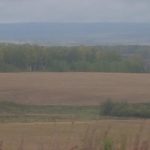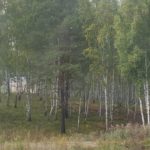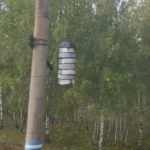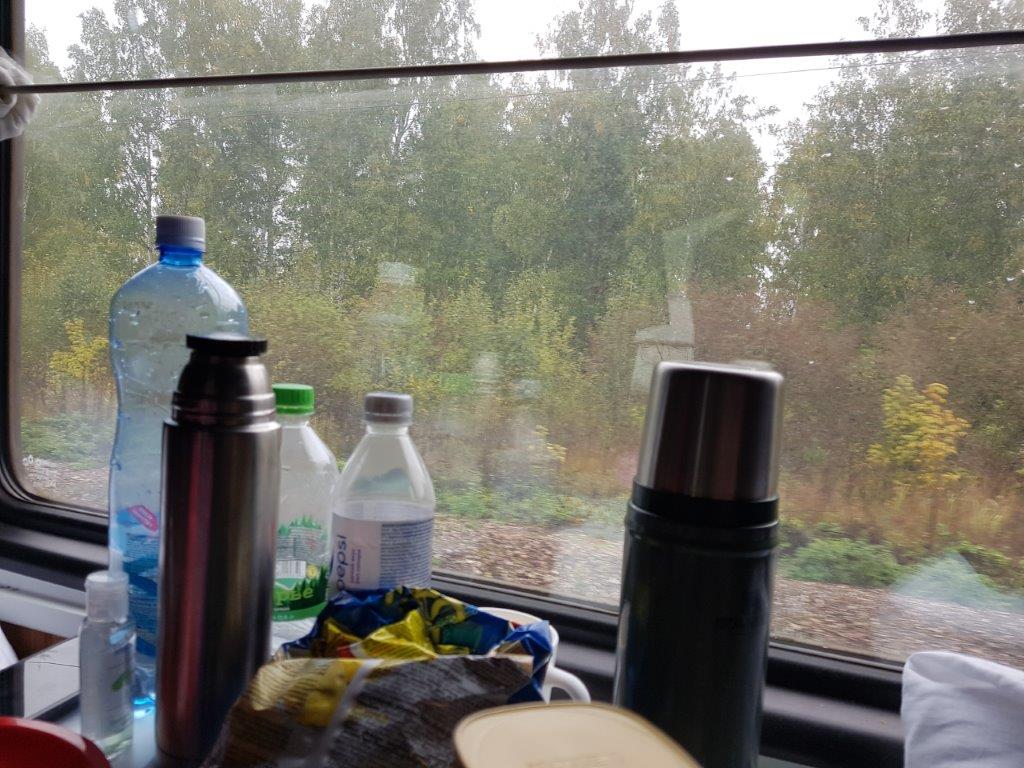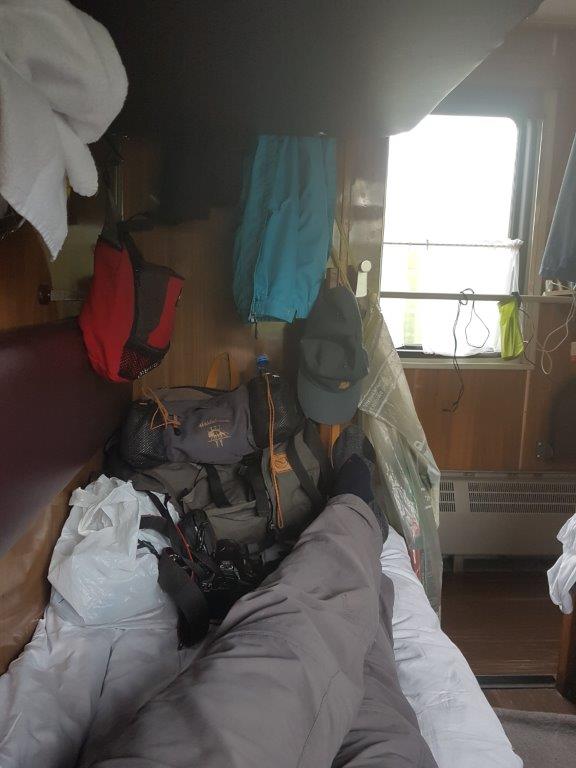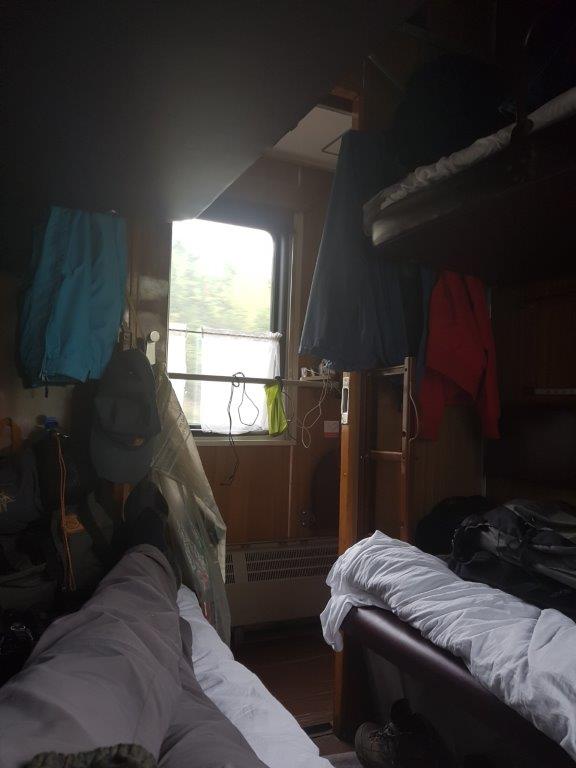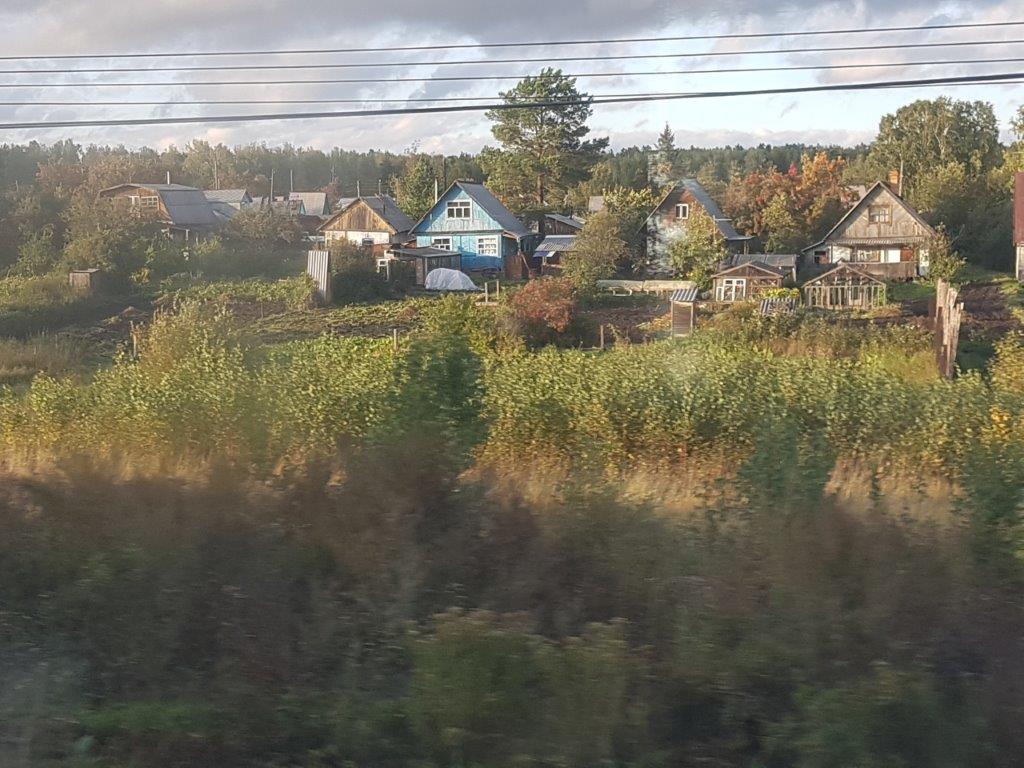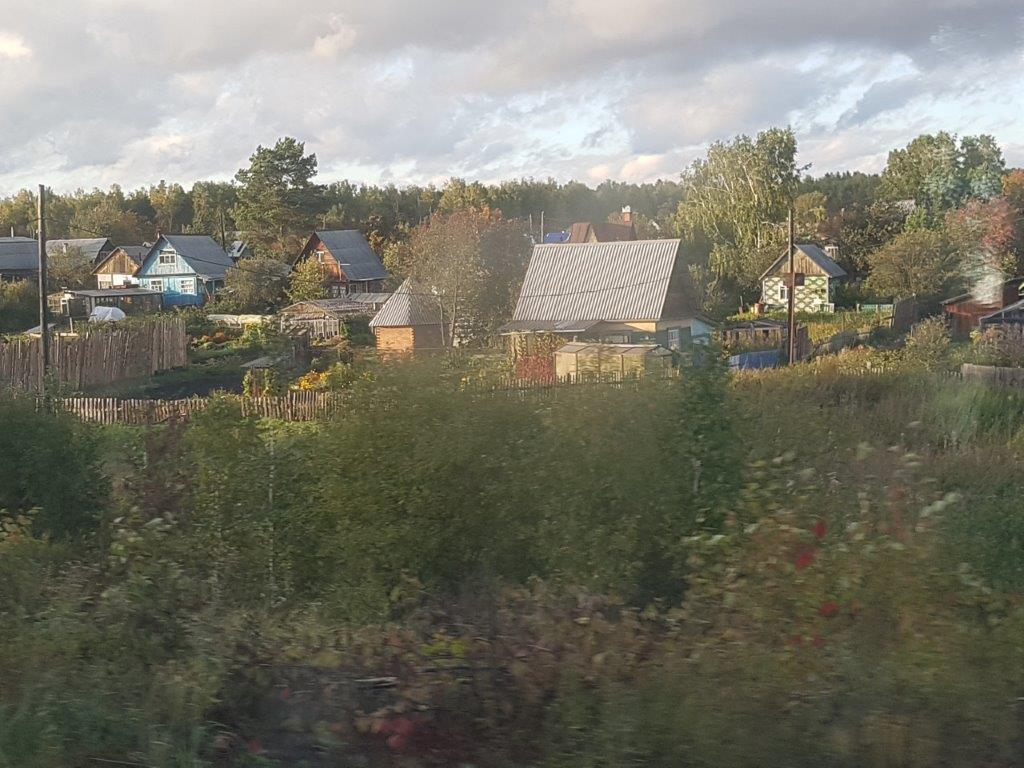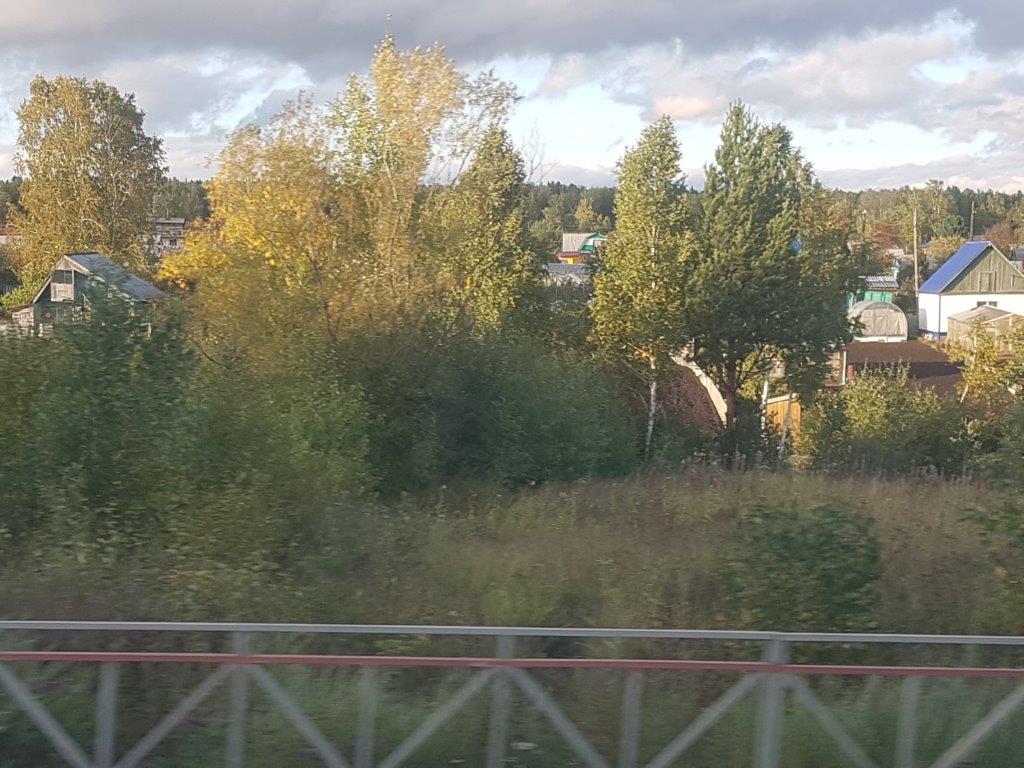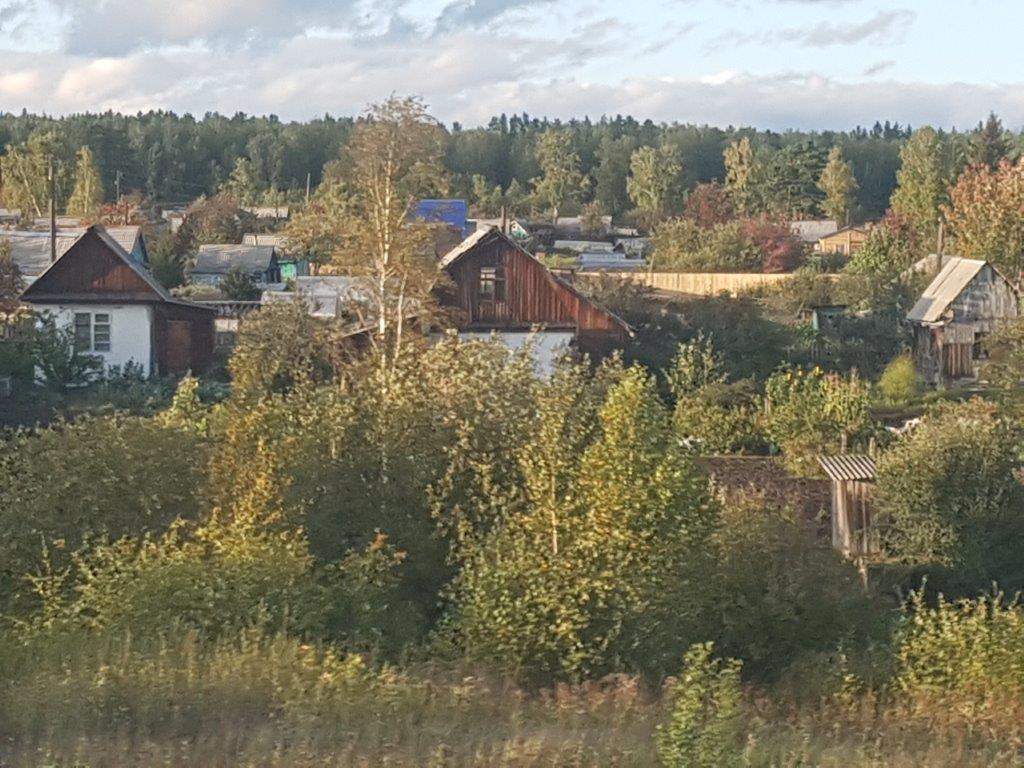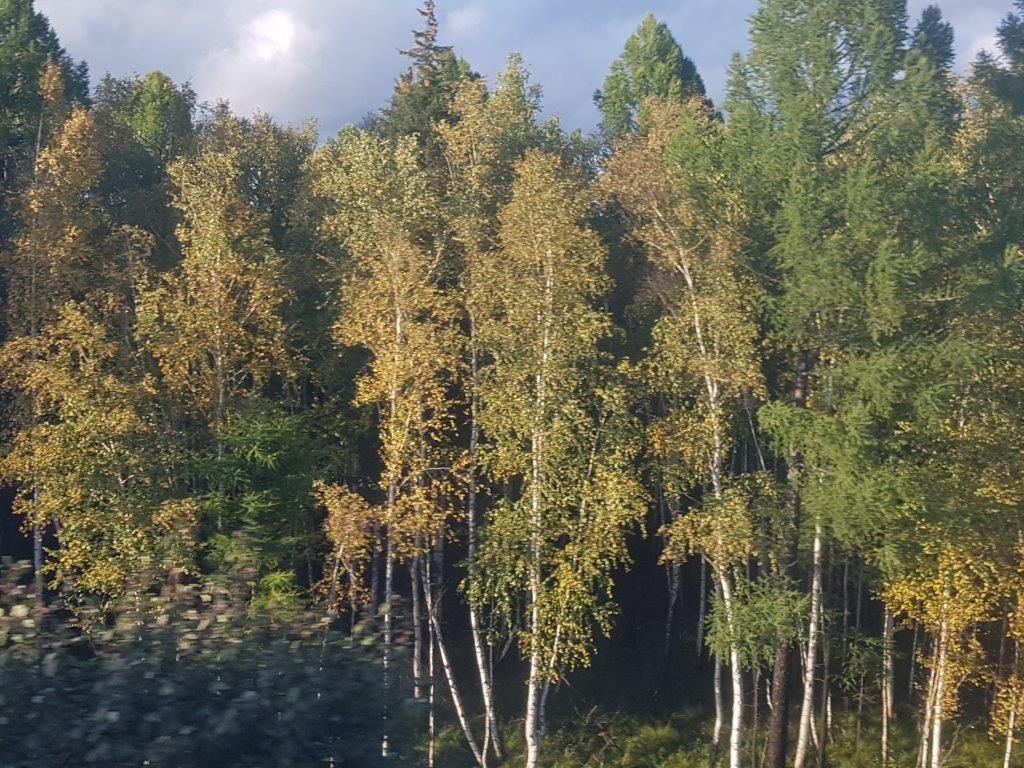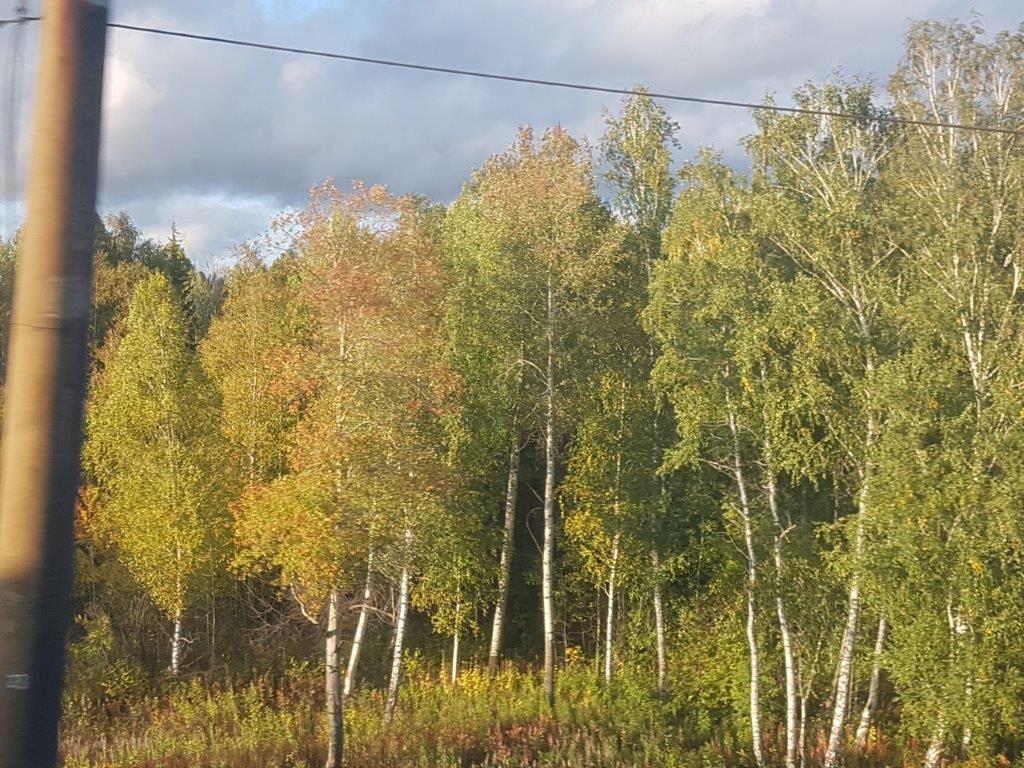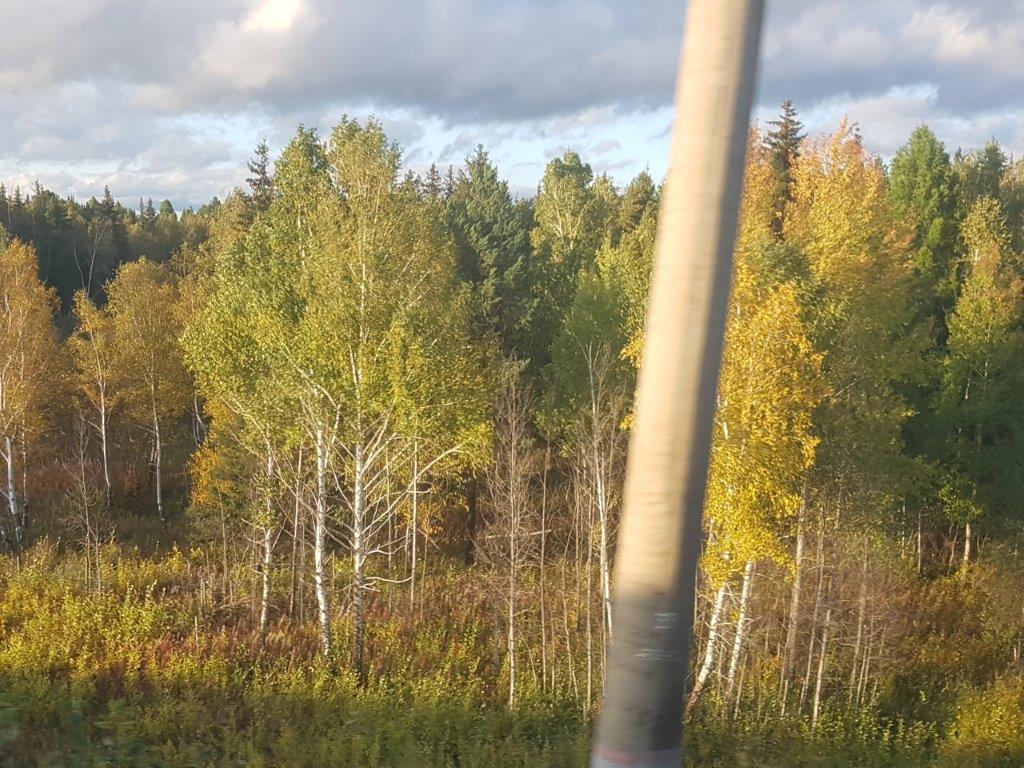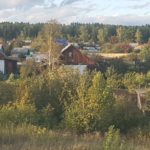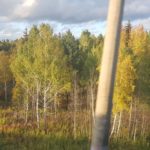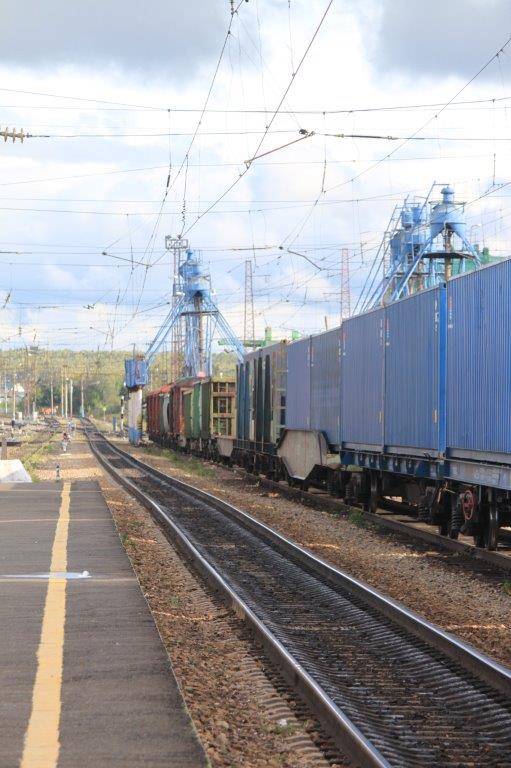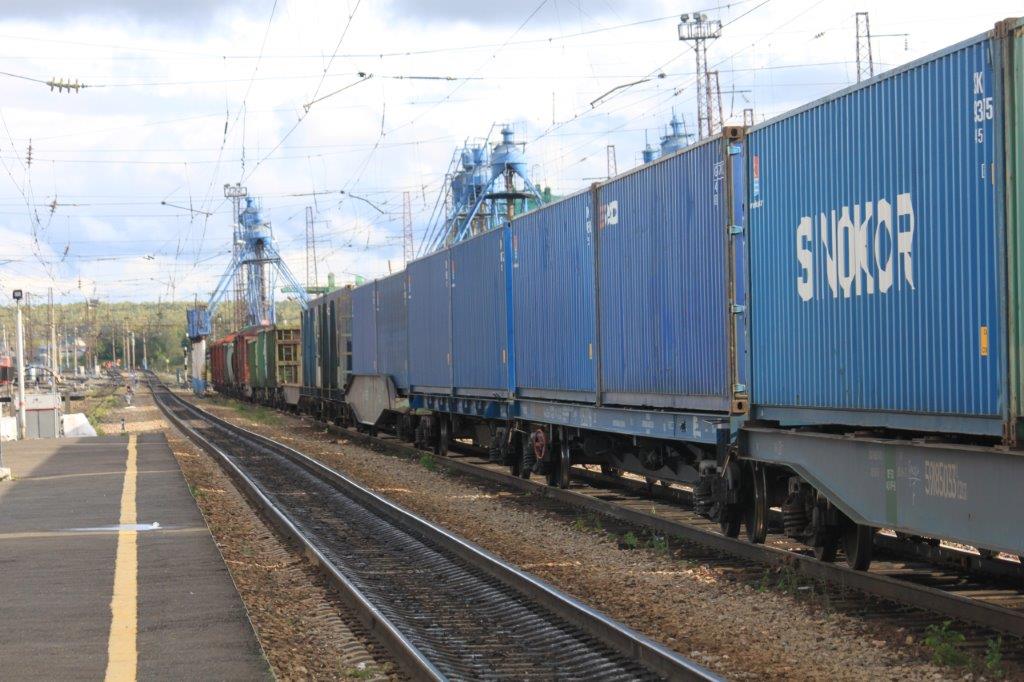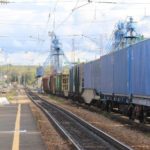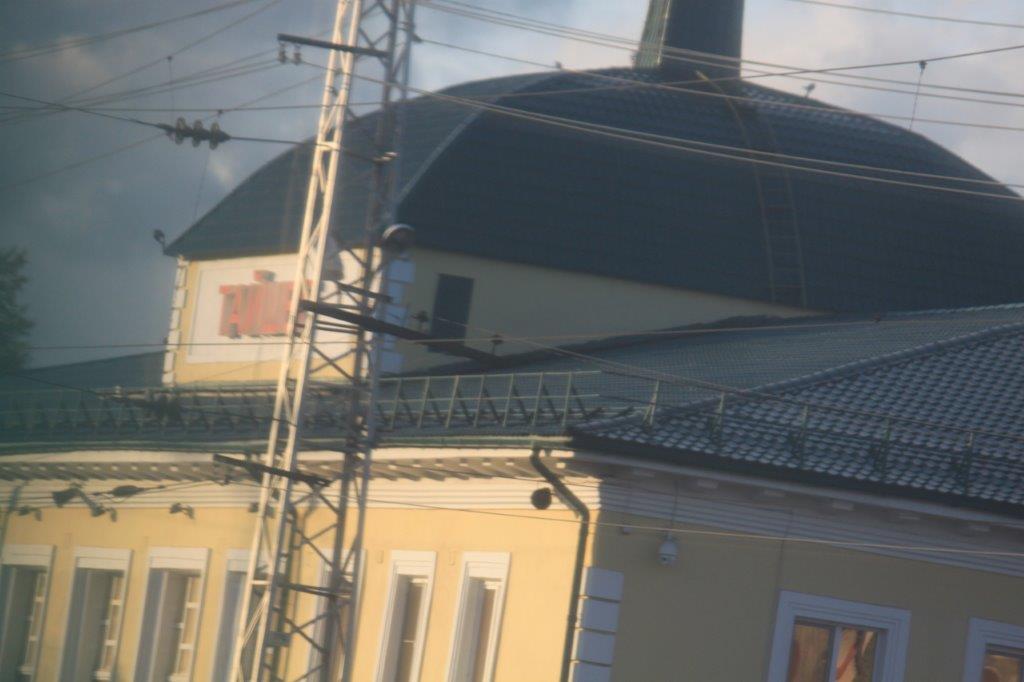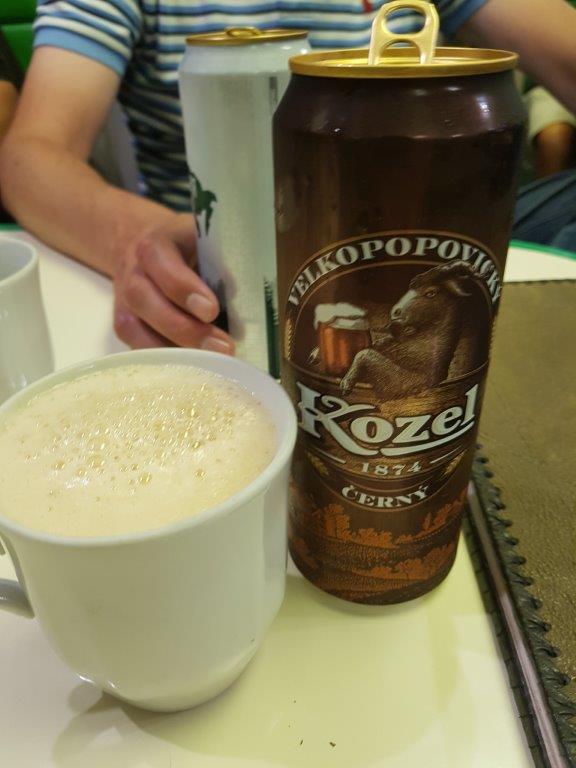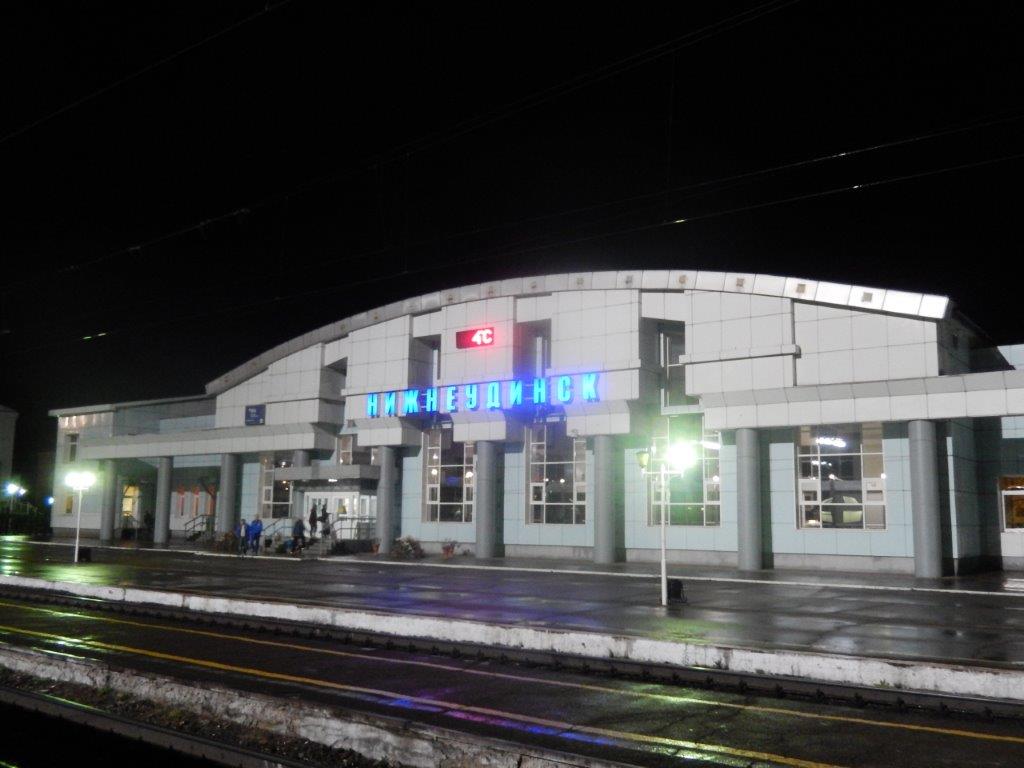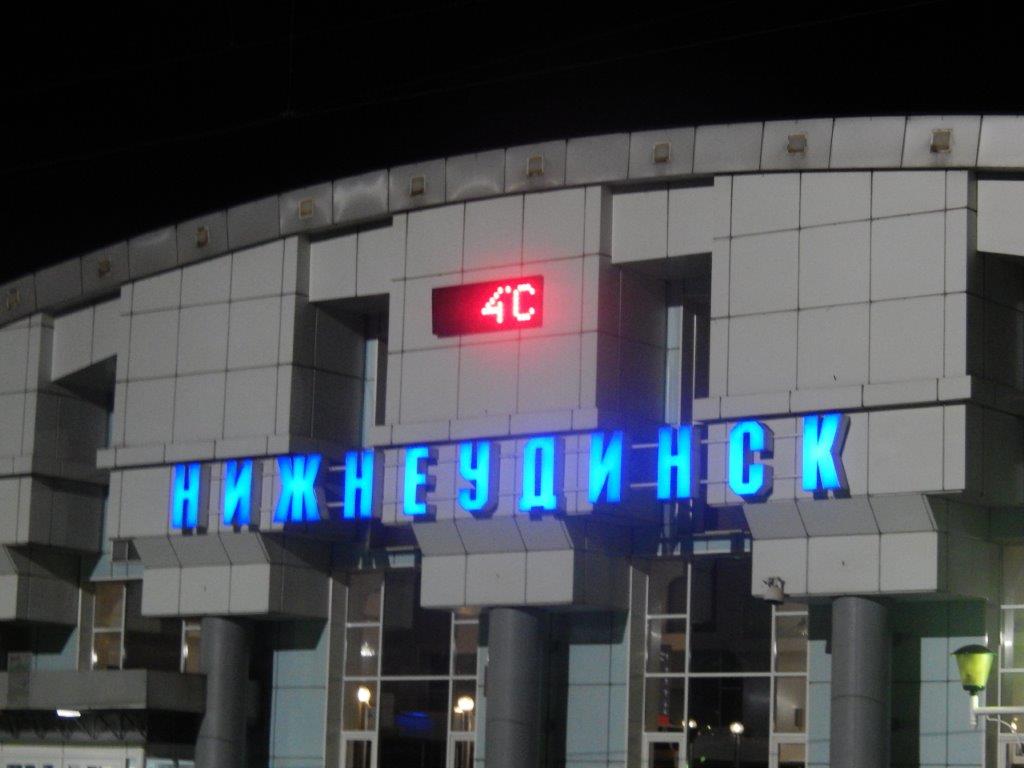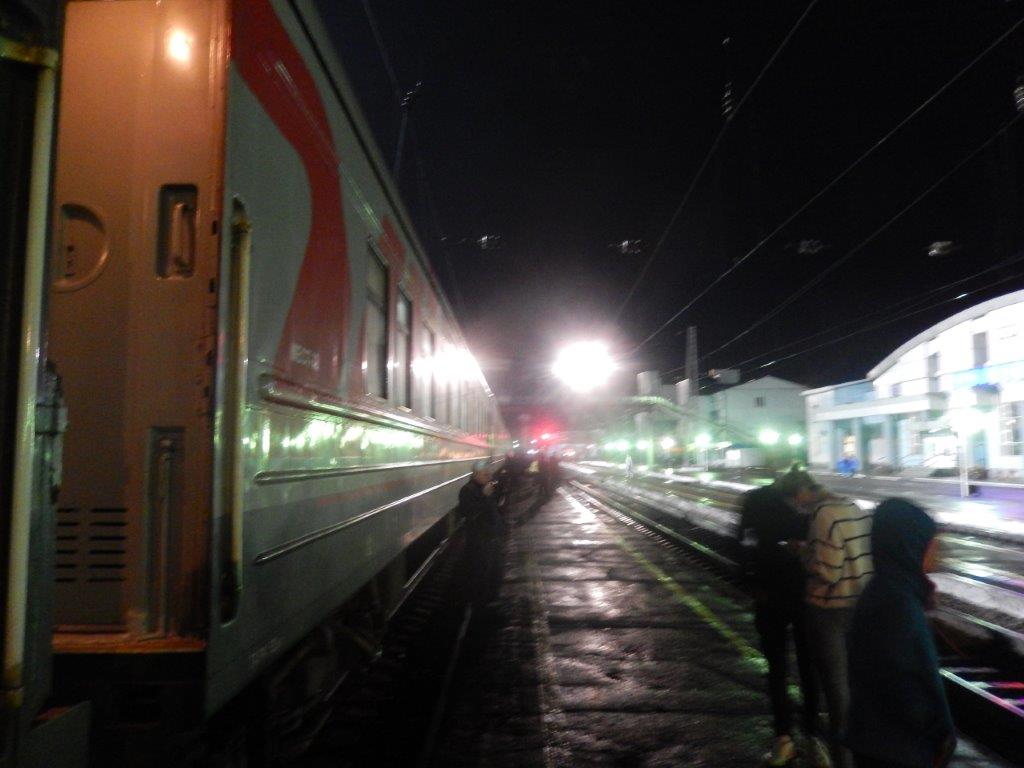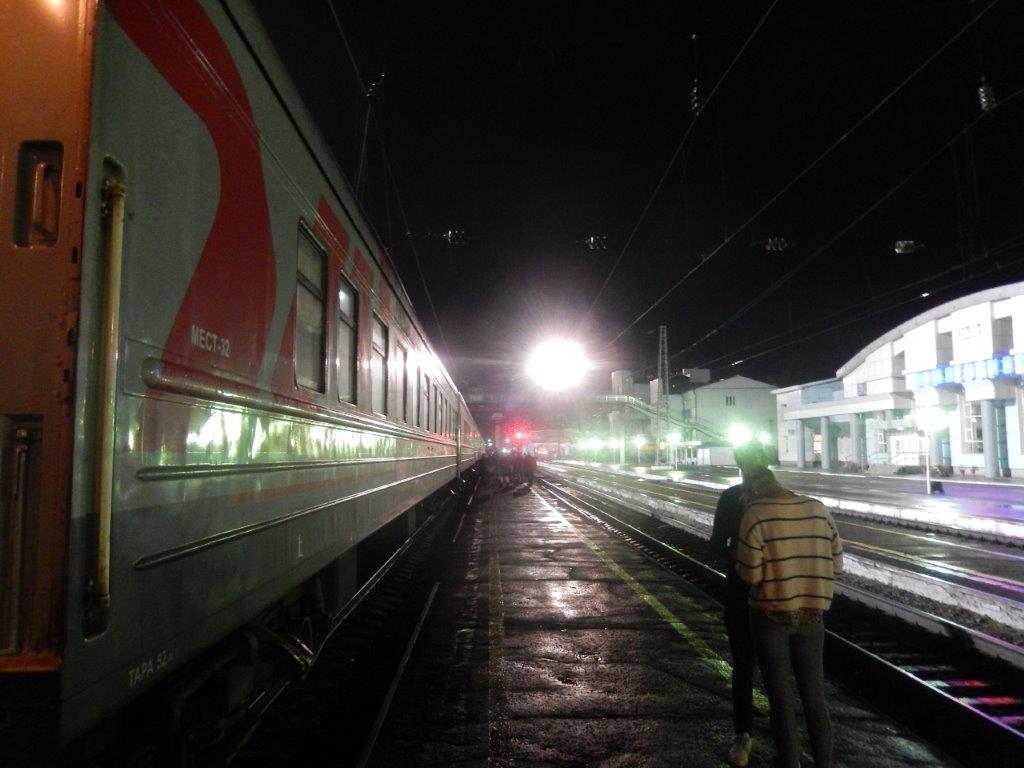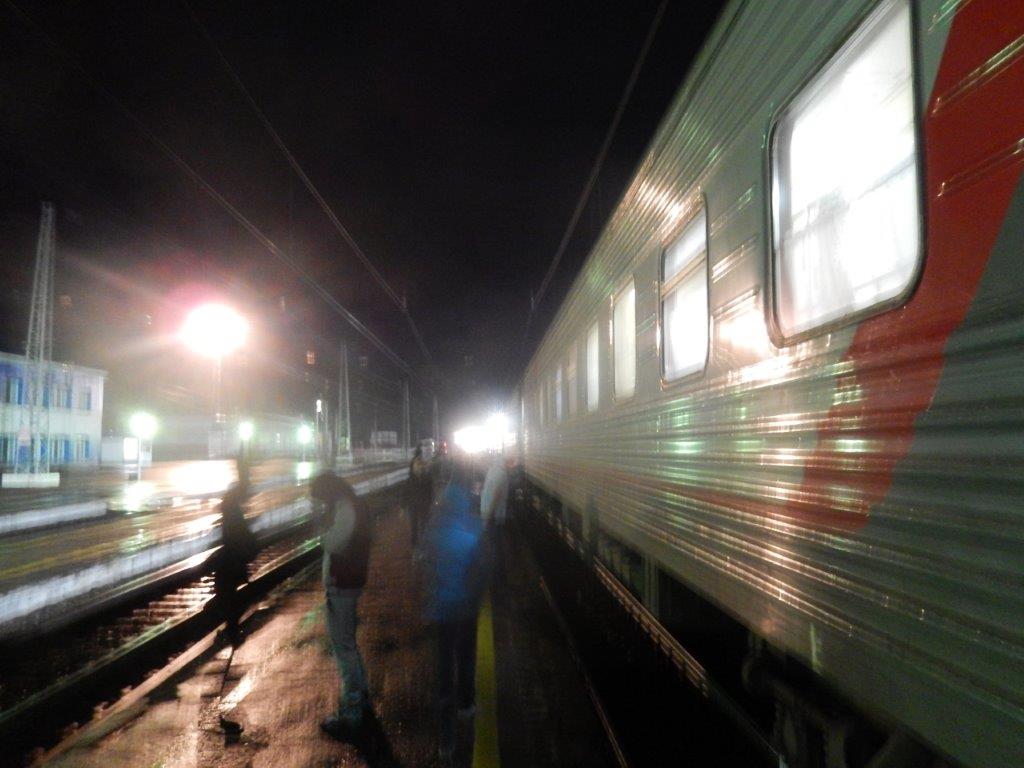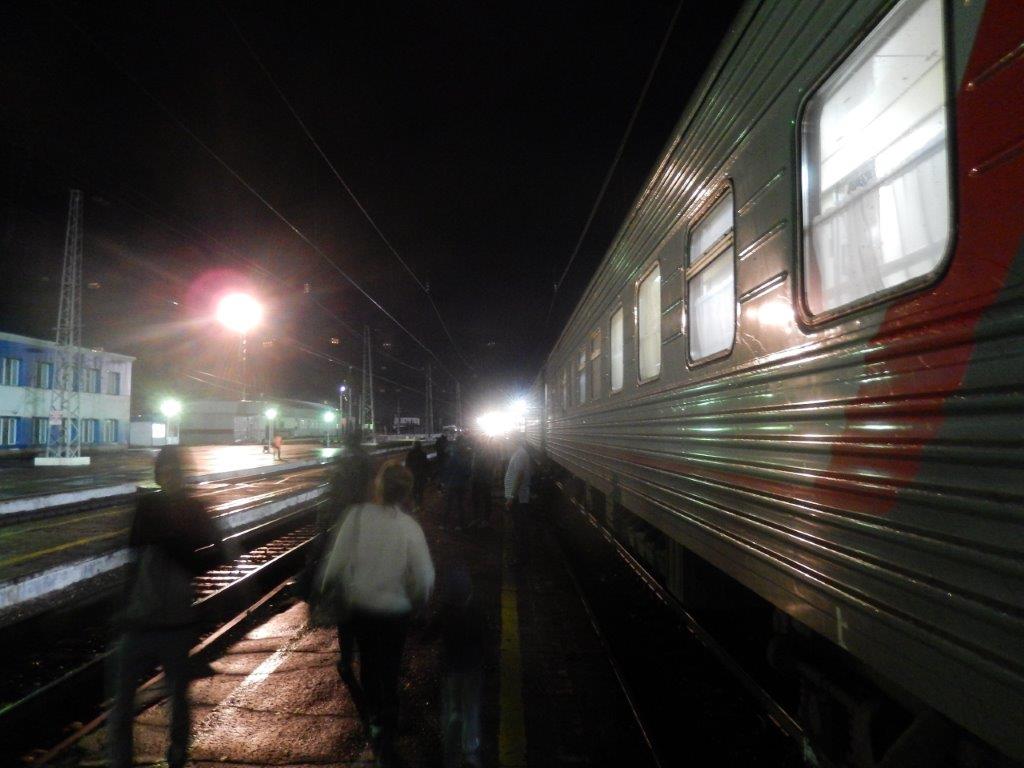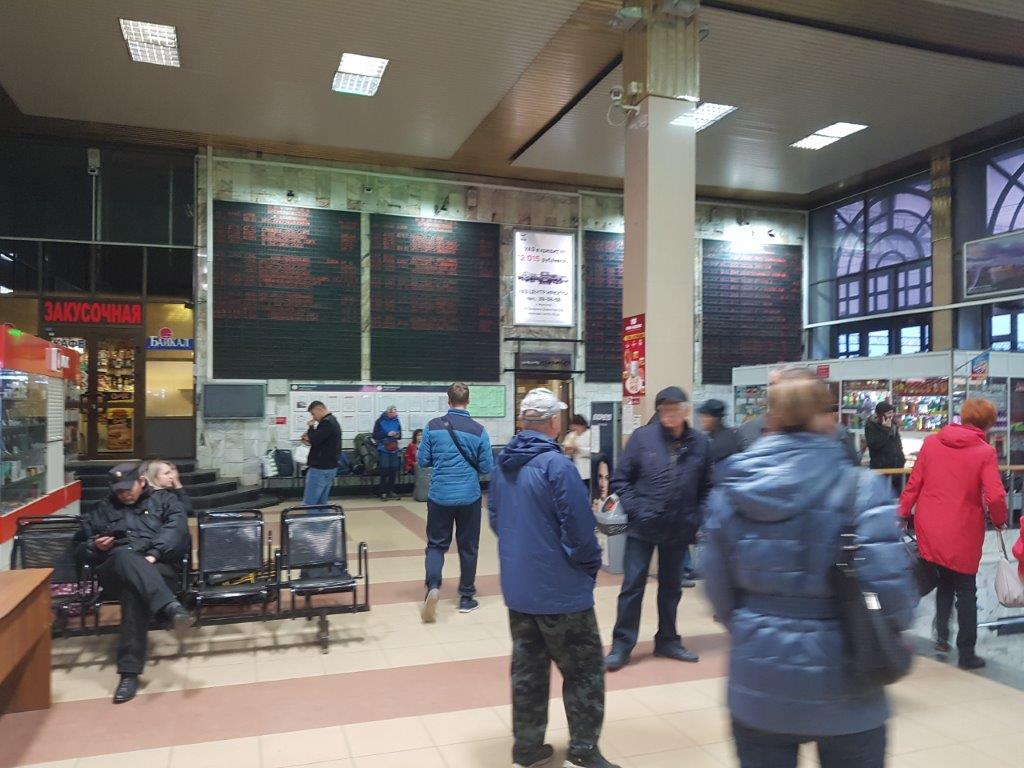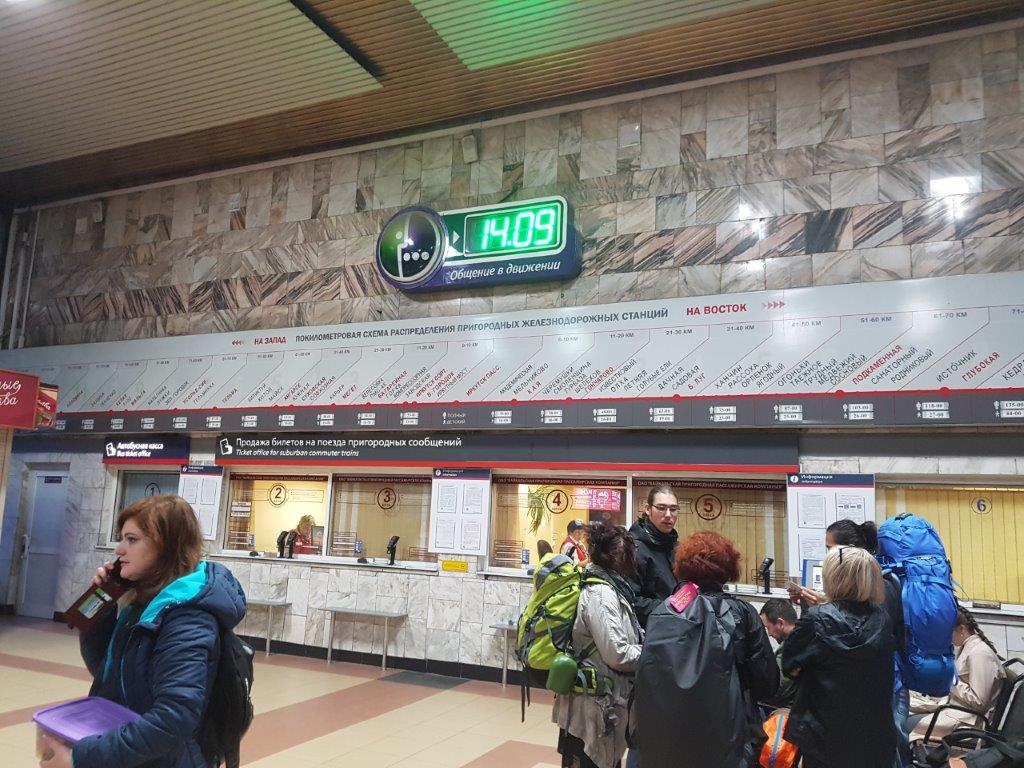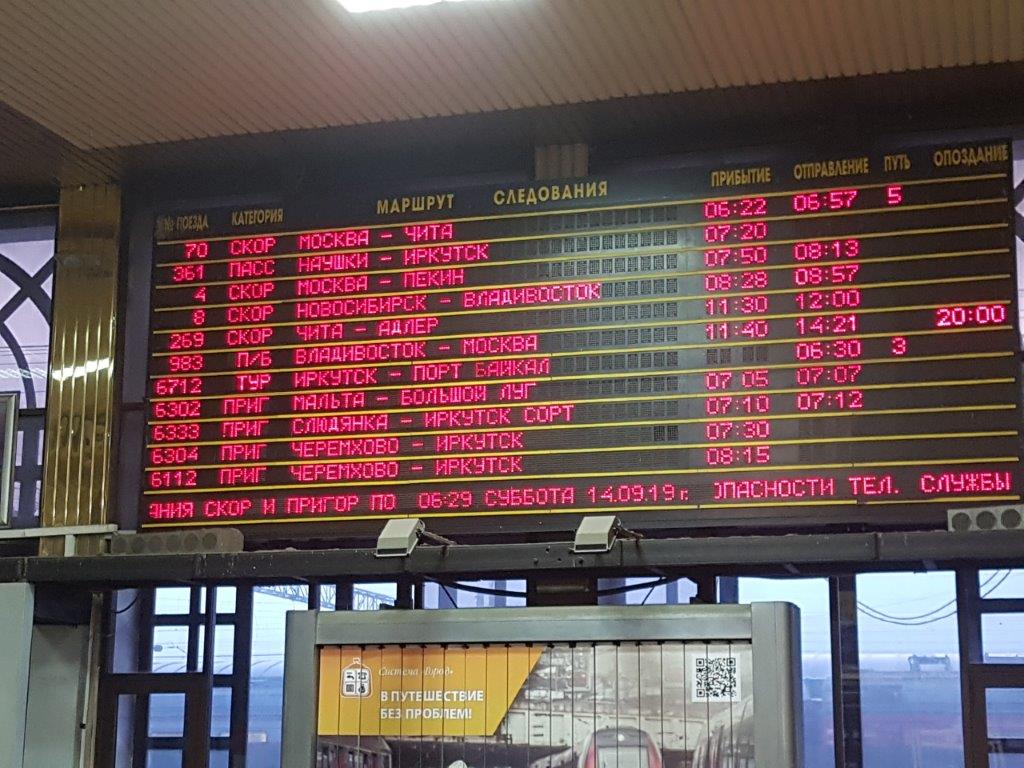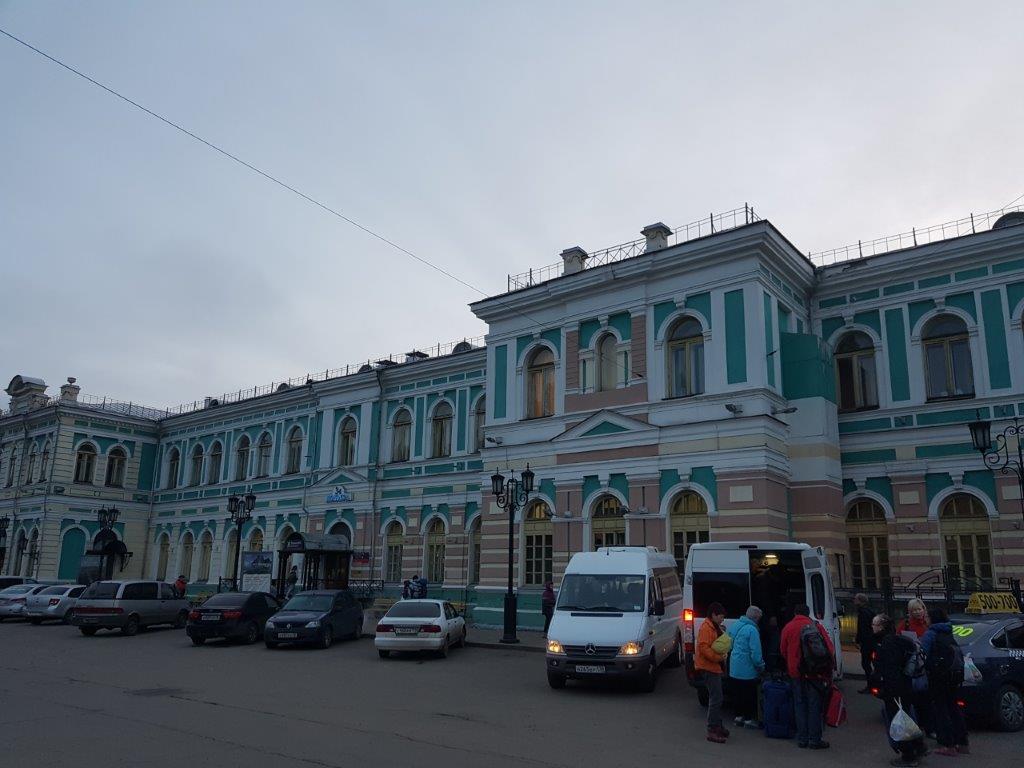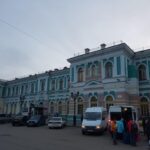The Trans Siberian Express: Mariinsk via Krasnoyarsk to Irkutsk (Central Siberian Highland)
The Wandelgek did not rise early today. No need because he was still moving forward even while sleeping. The train steadily south its direction in a straight way. Eastward bound!
 Yesterday evening and night it had travelled through the Novosibirk an Kemerovo oblasts and now the train had entered the Krasnoyask Oblast. This also meant that the landscape was slowly changing because the train now left the West Siberian Lowland and entered the Central Siberian Plateau.
Yesterday evening and night it had travelled through the Novosibirk an Kemerovo oblasts and now the train had entered the Krasnoyask Oblast. This also meant that the landscape was slowly changing because the train now left the West Siberian Lowland and entered the Central Siberian Plateau.
Arrival at Krasnoyarsk
 Krasnoyarsk (Russian: Красноя́рск) is a city and the administrative center of Krasnoyarsk Krai, Russia, located on the Yenisei River. It is the third-largest city in Siberia after Novosibirsk and Omsk, with a population of 1,035,528 as of the 2010 Census. Krasnoyarsk is an important junction of the Trans-Siberian Railway and one of Russia’s largest producers of aluminium.
Krasnoyarsk (Russian: Красноя́рск) is a city and the administrative center of Krasnoyarsk Krai, Russia, located on the Yenisei River. It is the third-largest city in Siberia after Novosibirsk and Omsk, with a population of 1,035,528 as of the 2010 Census. Krasnoyarsk is an important junction of the Trans-Siberian Railway and one of Russia’s largest producers of aluminium.
The city is known for its nature landscapes; author Anton Chekhov judged Krasnoyarsk to be the most beautiful city in Siberia (and that is saying something).
Krasnoyarsk Railway Station (10.25-11.06 (Delayed from 10.07-10.38))
Until now the Wandelgek had not noticed any delay im the time schedule at all, but at Krasnoyarsk he noticed that the electronic signs on the platform were taking in account an 18 minute delay for the Moscow to Chita train.
Weather had declined and it had become cloudy, dreary and grey…
Crossing the Yenisey River
Just past Krasnoyarsk, the train crossed the longest river of Russia; The Yenisey River.
The Yenisey (Russian: Енисе́й, Yeniséy), also romanised as Yenisei, Enisei, or Jenisej, is the fifth-longest river system in the world, and the largest to drain into the Arctic Ocean. Rising in Mungaragiyn-gol in Mongolia, it follows a northerly course before draining into the Yenisey Gulf in the Kara Sea. The Yenisey divides the Western Siberian Plain in the west from the Central Siberian Plateau to the east; it drains a large part of central Siberia.
It is the central one of three large Siberian rivers that flow into the Arctic Ocean (the other two being the Ob and the Lena).
The maximum depth of the Yenisey is 24 metres (80 ft) and the average depth is 14 metres (45 ft). The depth of river outflow is 32 metres (106 ft) and inflow is 31 metres (101 ft)
Taiga…endless Taiga…
As I explained in my previous blog about Russia, the Taiga is the largest, contiuous forest in the world (yes, even larger then the Amazon forest in Brazil). It mainly consists out of dense larch, pine and spruce tree forest in the north and more south it gets a bit more diverse adding mainly birch trees.
Taiga (Russian: тайга́), generally referred to in North America as boreal forest or snow forest, is a biome characterized by coniferous forests consisting mostly of pines, spruces, and larches.
The taiga or boreal forest is the world’s largest land biome. In North America, it covers most of inland Canada, Alaska, and parts of the northern contiguous United States. In Eurasia, it covers most of Sweden, Finland, much of Russia from Karelia in the west to the Pacific Ocean (including much of Siberia), much of Norway and Estonia, some of the Scottish Highlands, some lowland/coastal areas of Iceland, and areas of northern Kazakhstan, northern Mongolia, and northern Japan (on the island of Hokkaidō). The main tree species, the length of the growing season and summer temperatures vary. For example, the taiga of North America mostly consists of spruces; Scandinavian and Finnish taiga consists of a mix of spruce, pines and birch; Russian taiga has spruces, pines and larches depending on the region, while the Eastern Siberian taiga is a vast larch forest. The Taiga in its current form is a relatively recent phenomenon, having only existed for the last 12,000 years since the beginning of the Holocene epoch, covering land that had been mammoth steppe or under the Scandinavian Ice Sheet in Eurasia and under the Laurentide Ice Sheet in North America during the Late Pleistocene.
A different use of the term taiga is often encountered in the English language, with “boreal forest” used in the United States and Canada to refer to only the more southerly part of the biome, while “taiga” is used to describe the more barren areas of the northernmost part of the biome approaching the tree line and the tundra biome. Hoffman (1958) discusses the origin of this differential use in North America and why it is an inappropriate differentiation of the Russian term. Although at high elevations taiga grades into alpine tundra through Krummholz, it is not exclusively an alpine biome; and unlike subalpine forest, much of taiga is lowlands.
Below are some impressions of the forest and its density is now breached by the Tran Siberian Express railway and by some roads going to villages and towns (mainly located along the railway and besides the rivers going north. This got me thinking about how Siberia was explored and conquered? I mean, there were no roads, towns, villages and certainly no railway in those days, so how was this done? (more of that below the pics).
Exploration of Siberia
In some of my previous blogposts: The railroad to Tatarstan: Moscow –> Kazan (Ural line) & Window to Siberia: Yekaterinburg/Jekaterinenburg: Capital of the Urals (citywalk), I explained how Russias territory slowly expanded from Ukraine, Belarus and Greater Russia (around Moscow) into Tatarstan and towards the Urals and Yekaterinburg. But what happened afterwards? Yekaterinburg was named the Window to Siberia, because it became the main hub for exploreres and conquerers going East.
The Cossacks
The Cossacks are a group of predominantly East Slavic-speaking Orthodox Christian people who became known as members of democratic, self-governing, semi-military communities, originating in the Pontic steppe, north of the Black Sea. They inhabited sparsely populated areas and islands in the lower Dnieper, Don, Terek and Ural river basins and played an important role in the historical and cultural development of both Ukraine and Russia.
After World War II, the Cossack units in the Soviet Army were disbanded. During the Perestroika era of the Soviet Union in the late 1980s, descendants of Cossacks began to revive their national traditions. In 1988, the Soviet Union passed a law allowing the reestablishment of former Cossack hosts, and the creation of new ones. During the 1990s, many regional authorities agreed to hand over to these Cossack hosts some of the local administrative and policing duties.
In the 2002 Russian Census, 140,028 people claimed Cossack ethnicity, with 67,573 people identifying as ethnic Cossack in the Russian Census of 2010. Between 3.5 and 5 million people associate themselves with the Cossack identity in Europe and across the world, and there are Cossack organizations in Russia, Kazakhstan, Ukraine, Belarus, and the United States.
From the 16th to 19th centuries, Russian Cossacks played a key role in the expansion of the Russian Empire into Siberia (particularly by Yermak Timofeyevich), the Caucasus, and Central Asia. Cossacks also served as guides to most Russian expeditions of civil and military geographers and surveyors, traders, and explorers. In 1648, the Russian Cossack Semyon Dezhnyov discovered a passage between North America and Asia. Cossack units played a role in many wars in the 17th, 18th, and 19th centuries, including the Russo-Turkish Wars, the Russo-Persian Wars, and the annexation of Central Asia.
Expansion into and conquest of Siberia
During past millennia different groups of nomads – such as the Enets, the Nenets, the Huns, the Xiongnu, the Scythians and the Uyghurs inhabited various parts of Siberia. The proto-Mongol Khitan people also occupied parts of the region. In 630 the Khan of Sibir in the vicinity of modern Tobolsk was known as a prominent figure who endorsed Kubrat as Khagan of Old Great Bulgaria. In the 13th century, during the period of the Mongol Empire, the Mongols conquered a large part of this area.
The Russian conquest of Siberia took place in the 16th and 17th centuries, when the Khanate of Sibir had become a loose political structure of vassalages that were being undermined by the activities of Russian explorers. Although outnumbered, the Russians pressured the various family-based tribes into changing their loyalties and establishing distant forts from which they conducted raids. To counter this, Kuchum Khan attempted to centralize his rule by imposing Islam on his subjects and reforming his tax-collecting apparatus.
Conquest of the Khanate of Sibir

The 1549 map of the region, in upper-right hand corner depicted Yugra (IVHRA, Homeland of Ugric people) / Sigismund von Herberstein / Public domain
The Russian conquest of Siberia began in July 1580 when some 540 Cossacks under Yermak Timofeyevich invaded the territory of the Voguls, subjects to Küçüm, the Khan of Siberia. They were accompanied by 300 Lithuanian and German slave laborers, whom the Stroganovs had purchased from the tsar. Throughout 1581, this force traversed the territory known as Yugra and subdued Vogul and Ostyak towns. At this time, they also captured a tax collector of Küçüm.
Following a series of Tatar raids in retaliation against the Russian advance, Yermak’s forces prepared for a campaign to take Qashliq, the Siberian capital. The force embarked in May 1582. After a three-day battle on the banks of the river Irtysh, Yermak was victorious against a combined force of Küçüm Khan and six allied Tatar princes. On 29 June, the Cossack forces were attacked by the Tatars but again repelled them.
Throughout September 1582, the Khan gathered his forces for a defense of Qashliq. A horde of Siberian Tatars, Voguls and Ostyaks massed at Mount Chyuvash to defend against invading Cossacks. On 1 October, a Cossack attempt to storm the Tatar fort at Mount Chyuvash was held off. On 23 October, the Cossacks attempted to storm the Tatar fort at Mount Chyuvash for a fourth time when the Tatars counterattacked. More than a hundred Cossacks were killed, but their gunfire forced a Tatar retreat and allowed the capture of two Tatar cannons. The forces of the Khan retreated, and Yermak entered Qashliq on 26 October.
Kuchum Khan retreated into the steppes and over the next few years regrouped his forces. He suddenly attacked Yermak on 6 August 1584 in the dead of night and defeated most of his army. The details are disputed with Russian sources claiming Yermak was wounded and tried to escape by swimming across the Wagay River which is a tributary of the Irtysh River, but drowned under the weight of his own chainmail. The remains of Yermak’s forces under the command of Mescheryak retreated from Qashliq, destroying the city as they left. In 1586 the Russians returned, and after subduing the Khanty and Mansi people through the use of their artillery they established a fortress at Tyumen close to the ruins of Qashliq. The Tatar tribes that were submissive to Küçüm Khan suffered from several attacks by the Russians between 1584–1595; however, Küçüm Khan would not be caught. Finally, in August 1598 Küçüm Khan was defeated at the Battle of Urmin near the river Ob. In the course of the fight, the Siberian royal family was captured by the Russians. However, Küçüm Khan escaped yet again. The Russians took the family members of Küçüm Khan to Moscow and there they remained as hostages. The descendants of the khan’s family became known as the Princes Sibirsky and the family is known to have survived until at least the late 19th century.
Despite his personal escape, the capture of his family ended the political and military activities of Küçüm Khan and he retreated to the territories of the Nogay Horde in southern Siberia. He had been in contact with the tsar and had requested that a small region on the banks of the Irtysh River would be granted as his dominion. This was rejected by the tsar who proposed to Küçüm Khan that he come to Moscow and “comfort himself” in the service of the tsar. However, the old khan did not want to suffer from such contempt and preferred staying in his own lands to “comforting himself” in Moscow. Küçüm Khan then went to Bokhara and as an old man became blind, dying in exile with distant relatives sometime around 1605.
Conquest and exploration
Growth of Russia
In order to subjugate the natives and collect yasak (fur tribute), a series of winter outposts (zimovie) and forts (ostrogs) were built at the confluences of major rivers and streams and important portages. The first among these were Tyumen and Tobolsk — the former built in 1586 by Vasilii Sukin and Ivan Miasnoi, and the latter the following year by Danilo Chulkov. Tobolsk would become the nerve center of the conquest. To the north Beryozovo (1593) and Mangazeya (1600–01) were built to bring the Nenets under tribute, while to the east Surgut (1594) and Tara (1594) were established to protect Tobolsk and subdue the ruler of the Narym Ostiaks. Of these, Mangazeya was the most prominent, becoming a base for further exploration eastward.
Advancing up the Ob and its tributaries, the ostrogs of Ketsk (1602) and Tomsk (1604) were built. Ketsk sluzhilye liudi (“servicemen”) reached the Yenisei in 1605, descending it to the Sym; two years later Mangazeyan promyshlenniks and traders descended the Turukhan to its confluence with the Yenisei, where they established the zimovie Turukhansk. By 1610 men from Turukhansk had reached the mouth of the Yenisei and ascended it as far as the Sym, where they met rival tribute collectors from Ketsk. To ensure subjugation of the natives, the ostrogs of Yeniseysk (1619) and Krasnoyarsk (1628) were established.
Following the khan’s death and the dissolution of any organised Siberian resistance, the Russians advanced first towards Lake Baikal and then the Sea of Okhotsk and the Amur River. However, when they first reached the Chinese border they encountered people that were equipped with artillery pieces and here they halted.
The conquest of Siberia also resulted in the spread of diseases, which is currently a topic that, because of Covid-19, is in the center of attention. Historian John F. Richards wrote: “… it is doubtful that the total early modern Siberian population exceeded 300,000 persons. … New diseases weakened and demoralized the indigenous peoples of Siberia. The worst of these was smallpox “because of its swift spread, the high death rates, and the permanent disfigurement of survivors.” … In the 1650s, it moved east of the Yenisey, where it carried away up to 80 percent of the Tungus and Yakut populations. In the 1690s, smallpox epidemics reduced Yukagir numbers by an estimated 44 percent. The disease moved rapidly from group to group across Siberia.”
Conclusion: The role of the Cossacks in the exploration and conquering of Siberia (Russias wild east) was quite similar to that of American settlers and cowboys in exploring and conquering Americas (wild) west.
More similarities follow in later blogposts…
Trainlife
Trees, trees, trees and trees, aditional trees, even more trees and yes some free extra trees…
A good moment to spend some time reading about what was to be expected on the upcoming section of my travels. Tomorrow morning, very early, the train would arrive in Irkutsk where The Wandelgek had planned to leave the train for a couple of days to visit the town but more importantly, to visit Lake Baikal.
The long tedious rut of the journey is broken by activities like making coffee, noodles, soup, reading, listening to music on my ipod (no wifi) and the occasional station, even those where you weren’t allowed to leave the train…
Arrival at Zaozernaya Station (13.45 – 13.47, but delayed from 13.27 – 13.29)
 Zaozyorny (Russian: Заозёрный) is a town and the administrative center of Rybinsky District of Krasnoyarsk Krai, Russia, located on the Barga River (Yenisei’s basin), the affluent of the Kan, 166 kilometers (103 mi) east of Krasnoyarsk on the 4,263rd km of the Trans-Siberian Railway (Zaozyornaya railway station). Population: 10,681 (2010 Census); 12,476 (2002 Census); 15,714 (1989 Census).
Zaozyorny (Russian: Заозёрный) is a town and the administrative center of Rybinsky District of Krasnoyarsk Krai, Russia, located on the Barga River (Yenisei’s basin), the affluent of the Kan, 166 kilometers (103 mi) east of Krasnoyarsk on the 4,263rd km of the Trans-Siberian Railway (Zaozyornaya railway station). Population: 10,681 (2010 Census); 12,476 (2002 Census); 15,714 (1989 Census).
Taiga and villages
Arrival at Ilanskaya Railway Station (15 40 – 15.57 , but delayed from 15.22 – 15.39)
 Somewhere in the afternoon at approximately 15.40, we arrived at Ilyansk and Ilyanskaya Railway Station.
Somewhere in the afternoon at approximately 15.40, we arrived at Ilyansk and Ilyanskaya Railway Station.
Ilansky (Russian: Ила́нский) is a town and the administrative center of Ilansky District of Krasnoyarsk Krai, Russia, located on the Ilanka River 279 kilometers (173 mi) east of Krasnoyarsk. Population: 16,111 (2010 Census); 17,073 (2002 Census); 18,409 (1989 Census).
Arrival at Tayshet Railway Station (19.11 – 19.16, but delayed from 18.53 – 18.58)
 Tayshet (Russian: Тайшет, lit. cold river in the Ket language) is a town and the administrative center of Tayshetsky District in Irkutsk Oblast, Russia, located 669 kilometers (416 mi) northwest of Irkutsk, the administrative center of the oblast. Population: 35,485 (2010 Census); 38,535 (2002 Census); 42,391 (1989 Census).
Tayshet (Russian: Тайшет, lit. cold river in the Ket language) is a town and the administrative center of Tayshetsky District in Irkutsk Oblast, Russia, located 669 kilometers (416 mi) northwest of Irkutsk, the administrative center of the oblast. Population: 35,485 (2010 Census); 38,535 (2002 Census); 42,391 (1989 Census).
Tayshet was also the station where people got off the train, that were travelling on the BAM section of the railway. The BAM or Baikal Amur Mainline, was the latest addition to the cluster of railways that together forms the Trans Siberian Express. It proceeds from Tayshet towards Severobaikalsk on the north edge of Lake Baikal and from there further east towards the Pacific Ocean shore somewhere near the island of Sakhalin. BAM purists could drive to Tayshet and get on the train, but the trains of the BAM start in Krasnoyarsk, where most people board the train.
History
It was founded in 1897 as a supply point and station on the Trans-Siberian Railway and was granted town status in 1938. Tayshet has been a former gulag town and transit point for hundreds and thousands of prisoners.
Platform…
From the platform The Wandelgek saw this strange structure…
The Wandelgek went to the restauration carriage at about 19.00 hrs for coffee and some delicious dark beers and to kill some time, by talking too other travellers about their journeys and about his own adventures.
Into the night…
Just before nightfall, we saw a beautiful twilight, sitting in the restaurant carriage. No really it was literally a TWI-LIGHT or twin light…
Beneath a pic of the twilight, of the sundogs and a pic of a depiction of sundogs in the Nuremburg Chronics…
It is a very rare atmospheric phenomenon named a Sundog, when you can see a second sun in the sky, (a bit like the sundown of the famous twin suns of Tatooine (Star Wars)…

Very bright sun dogs in Fargo, North Dakota. Also visible are parts of the 22° halo (the arcs passing through each sundog), a sun pillar (the vertical line) and the parhelic circle (the horizontal line). Gopherboy6956 / Public domain
A sun dog (or sundog) or mock sun, formally called a parhelion (plural parhelia) in meteorology, is an atmospheric optical phenomenon that consists of a bright spot to one or both sides of the Sun. Two sun dogs often flank the Sun within a 22° halo.
The sun dog is a member of the family of halos caused by the refraction of sunlight by ice crystals in the atmosphere. Sun dogs typically appear as a pair of subtly colored patches of light, around 22° to the left and right of the Sun, and at the same altitude above the horizon as the Sun. They can be seen anywhere in the world during any season, but are not always obvious or bright. Sun dogs are best seen and most conspicuous when the Sun is near the horizon.
Interesting was that although people were travelling on the same train and although most travellers were going for the same route (Beijing via Mongolia) as The Wandelgek had planned, the ececution of that journey could still be quite different. Some people were only stopping at Lake Baikal fir a few hours, some not at all, some were visiting south Mongolias Gobi desert, whereas The Wandelgek had planned to visit northern and central Mongolia. Some were staying longer in Beijing or even had plans to travel further. There were travellers who visited The Great Wall of China many years ago and The Wandelgek eagerly listened and asked about good locations to do that. Always fun to spend some hours on discussing itinaries 🙂
Arrival at Nizhneudinsk Railway Station (21.49 – 22.02), but delayed from 21.31 – 21.44)
 Occasionally the discussion were disrupted by stops at small railway stations, like this one…
Occasionally the discussion were disrupted by stops at small railway stations, like this one…
Nizhneudinsk (Russian: Нижнеу́динск) is a town and the administrative center of Nizhneudinsky District of Irkutsk Oblast, Russia, located on the Uda River (Yenisei’s basin), 506 kilometers (314 mi) northwest of Irkutsk, the administrative center of the oblast. Population: 36,999 (2010 Census); 39,624 (2002 Census); 43,759 (1989 Census); 39,700 (1970).
In the cabin we drank the last bits of wodka before going to sleep. The train would arrive early inthe morning at Irkutsk where The Wandelgek was unboarding the Trans Siberian Express for a couple of days.
After a good nights rest, the provodnitsa gave us an early wake up call, by banging on the cabin door. I think it was around 5.30 and we had to quickly prepare some noodles to eat, drink coffee, pack our stuff in the backpacks. Always tricky because there is not much space in a cabin when 4 people are doing this all at once. But we had been cabin mates from Moscow and thus had become experienced Trans Sib travellers. The trick is to agree on packing in teams of 2 people first znd 2 people afterwards. It is possible to get the backpacks from the space above the door and from underneath the loeer benches. One lifts the benches seat area and yhe other gets the backpack or bag. And then there was a system for gathering all bed and pillow linnen/sheets. One sitting on the top beds gets the linnen, the other stays down and both help eachother folding the bed sheets, then the one on top stuffs the sheets and linnen in a large bag, the other grabbing the linnen and sheets from the bottom beds and vice versa. The more practice we got, the better we got. It was almost sad when, at the end of our journey in Beijing, we had to stop doing this 😉
Arrival at Irkutsk Railway Station
 Somewhere between 6.00 en 7.00 the train entered Irkutsk Railway Station and The Wandelgek checked the cabin to not leave any stuff behind. After 3 days of train, he now arrived in the center of Siberia and after all those citytrips in Moscow, Kazan and Yekaterinburg, he finally arrived where he wanted to be. Lost in the middle of Siberia, ready to enter and conquer its wild nature.
Somewhere between 6.00 en 7.00 the train entered Irkutsk Railway Station and The Wandelgek checked the cabin to not leave any stuff behind. After 3 days of train, he now arrived in the center of Siberia and after all those citytrips in Moscow, Kazan and Yekaterinburg, he finally arrived where he wanted to be. Lost in the middle of Siberia, ready to enter and conquer its wild nature.
But 1st he left the train…
After leaving the train we met with our local guide who quickly directed us towards the central passengers hall of the station…
The Wandelgek left the entrance hall and immediately went towards a minibus that was waiting outside in front of the beautiful facade of Irkutsk Railway Station…
 Irkutsk (Russian: Иркутск) is the largest city and administrative center of Irkutsk Oblast, Russia. With a population of 617,473 as of the 2010 Census, Irkutsk is the 25th largest city in Russia by population, the 5th largest in the Siberian Federal District, and one of the largest cities in Siberia.
Irkutsk (Russian: Иркутск) is the largest city and administrative center of Irkutsk Oblast, Russia. With a population of 617,473 as of the 2010 Census, Irkutsk is the 25th largest city in Russia by population, the 5th largest in the Siberian Federal District, and one of the largest cities in Siberia.
Located in the south of the eponymous oblast, the city proper lies on the Angara River, a tributary of the Yenisei, about 850 kilometres (530 mi) to the south-east of Krasnoyarsk and about 520 kilometres (320 mi) north of Ulaanbaatar. The Trans-Siberian Highway (Federal M53 and M55 Highways) and Trans-Siberian Railway connect Irkutsk to other regions in Russia and Mongolia.
Many distinguished Russians were sent into exile in Irkutsk for their part in the Decembrist revolt of 1825, and the city became an exile-post for the rest of the century. Some historic wooden houses still survive. When the railway reached Irkutsk, it had earned the nickname of “The Paris of Siberia.” The city was the center of bitter fighting in the Russian Civil War of 1918–20. Afterward, in the Soviet period, its architecture was dominated by the mandatory squared-up style. The city became a major centre of aircraft manufacture. The historic centre of Irkutsk is located on UNESCO’s tentative list of World Heritage Sites.
Then the minibus left towards the Village of the Larch Trees…


